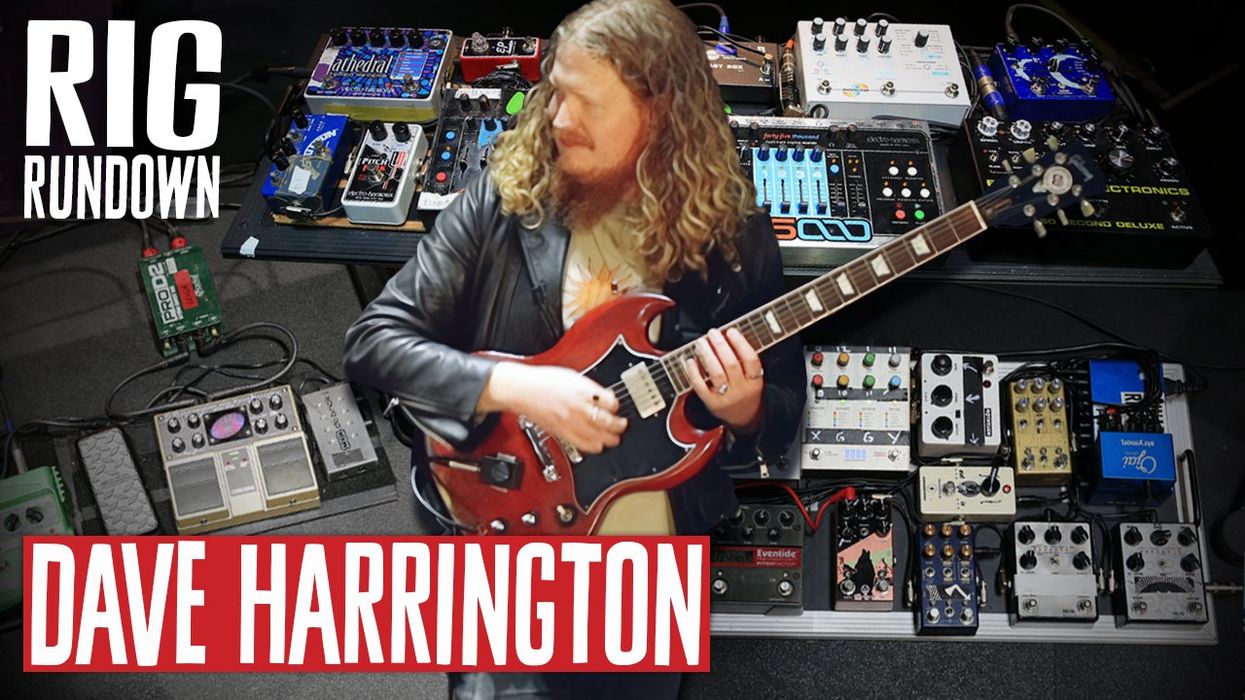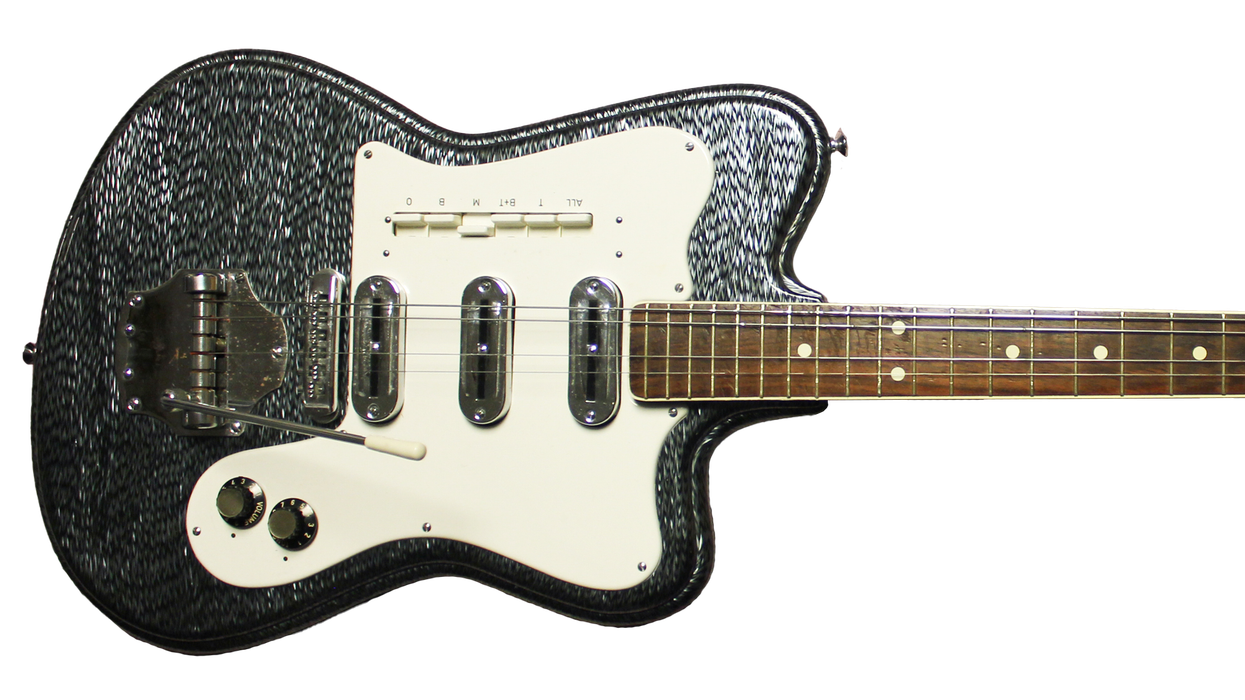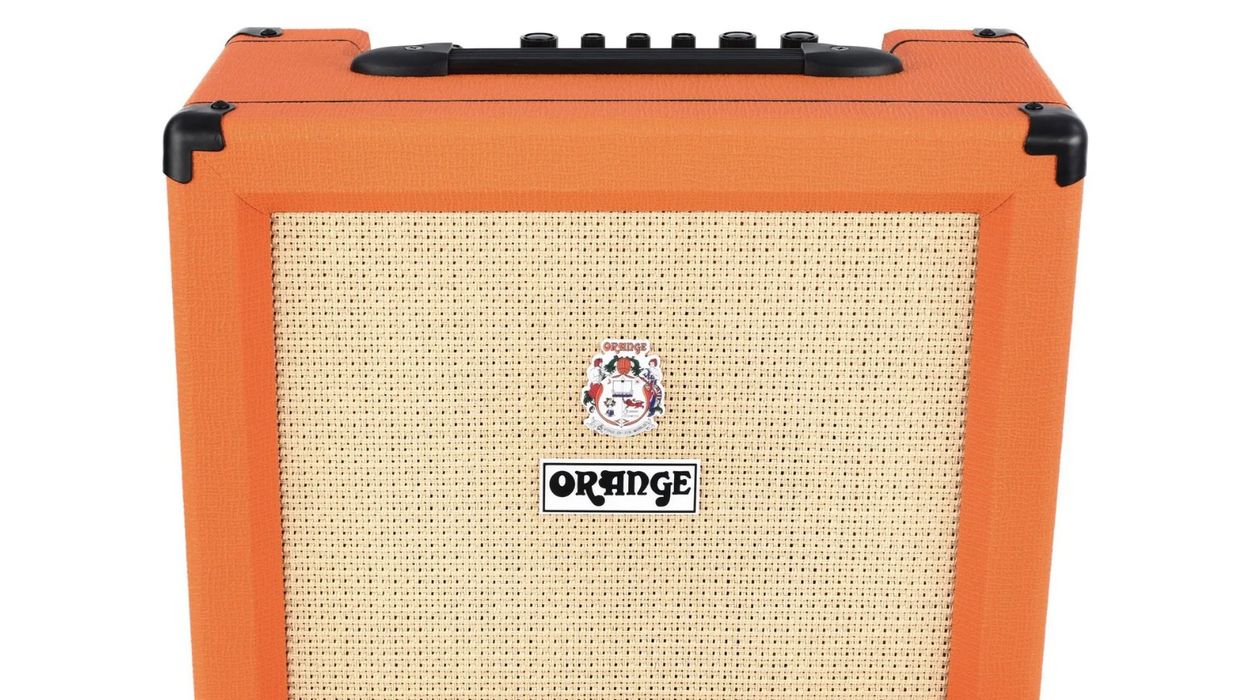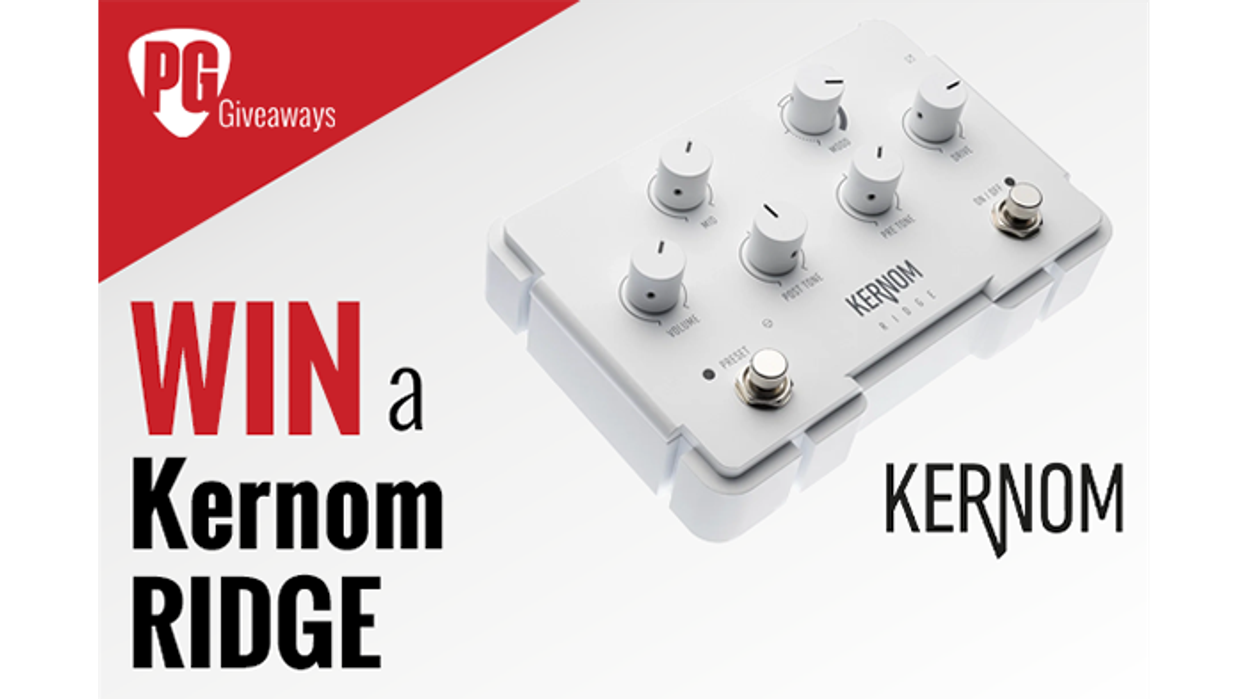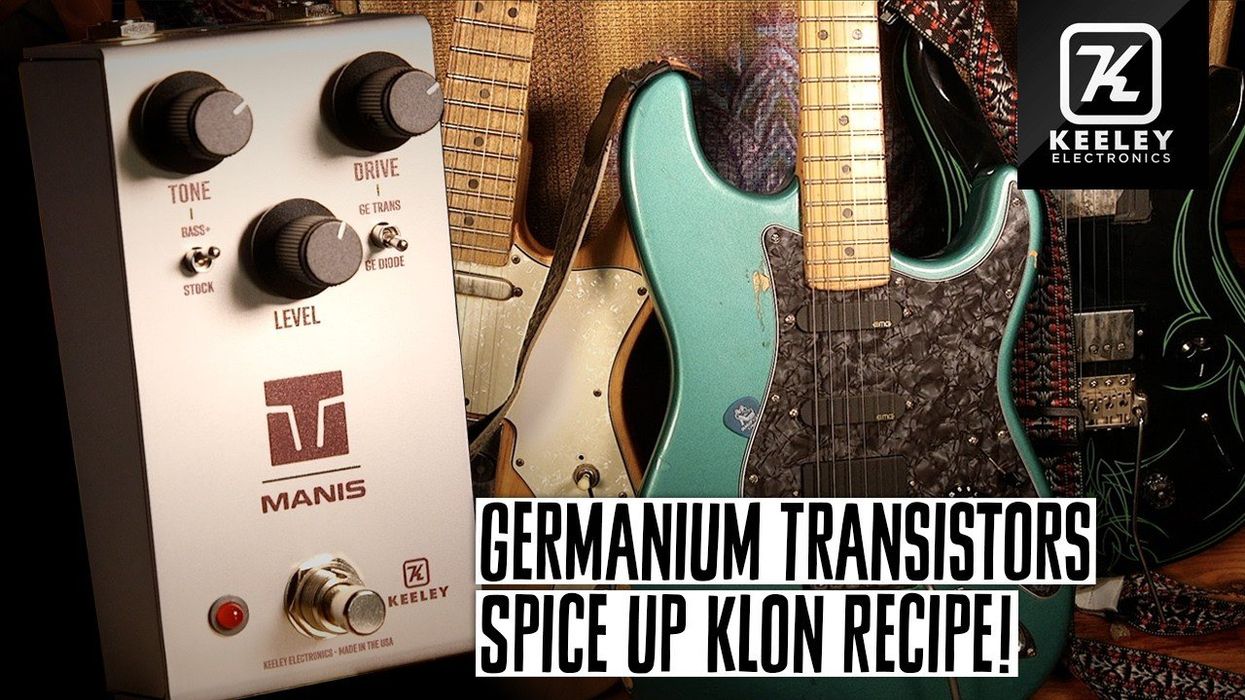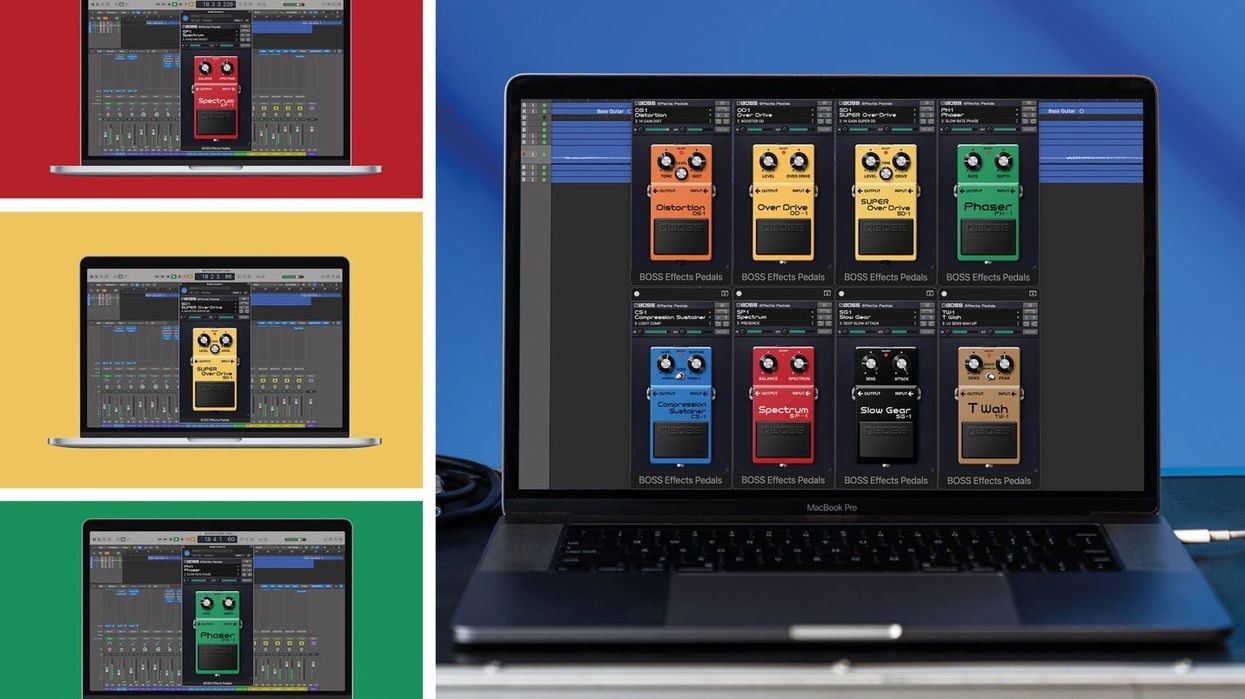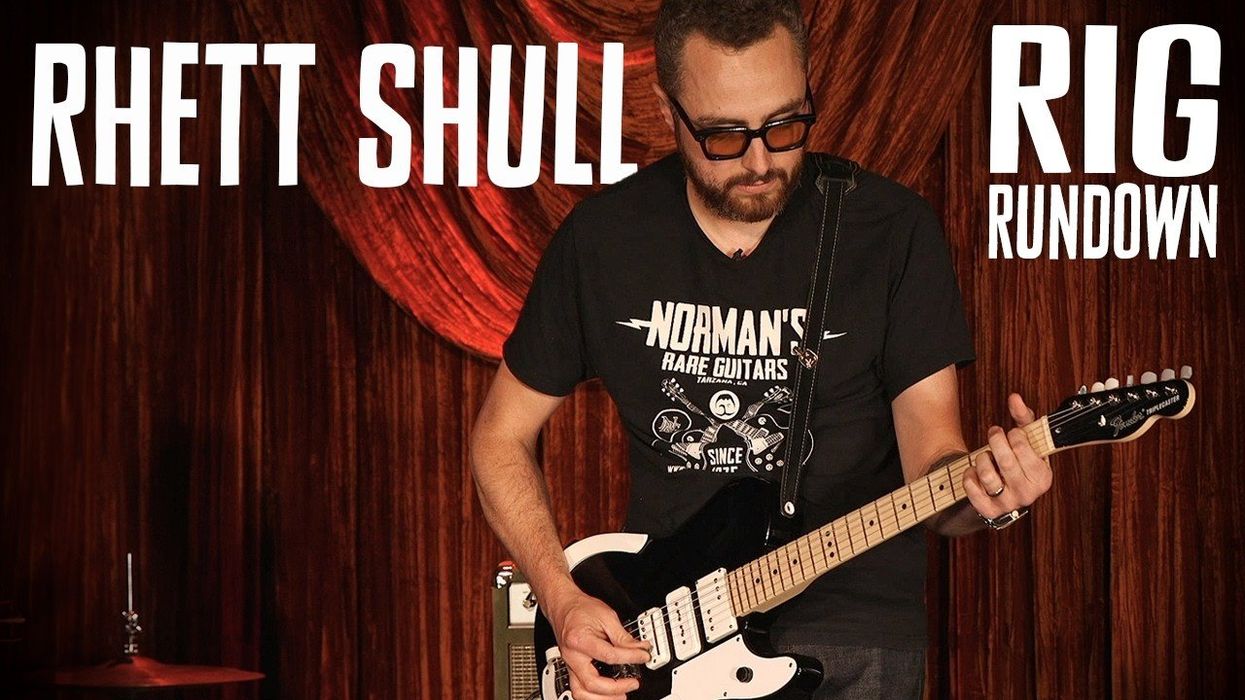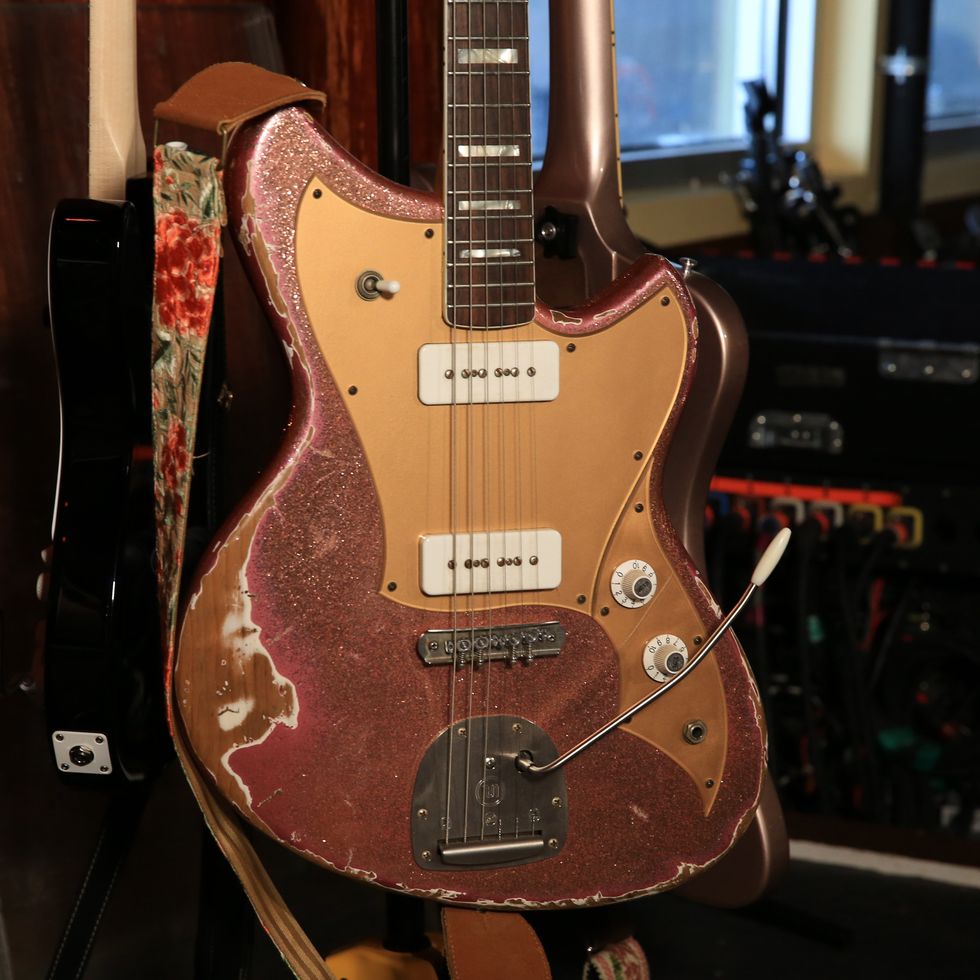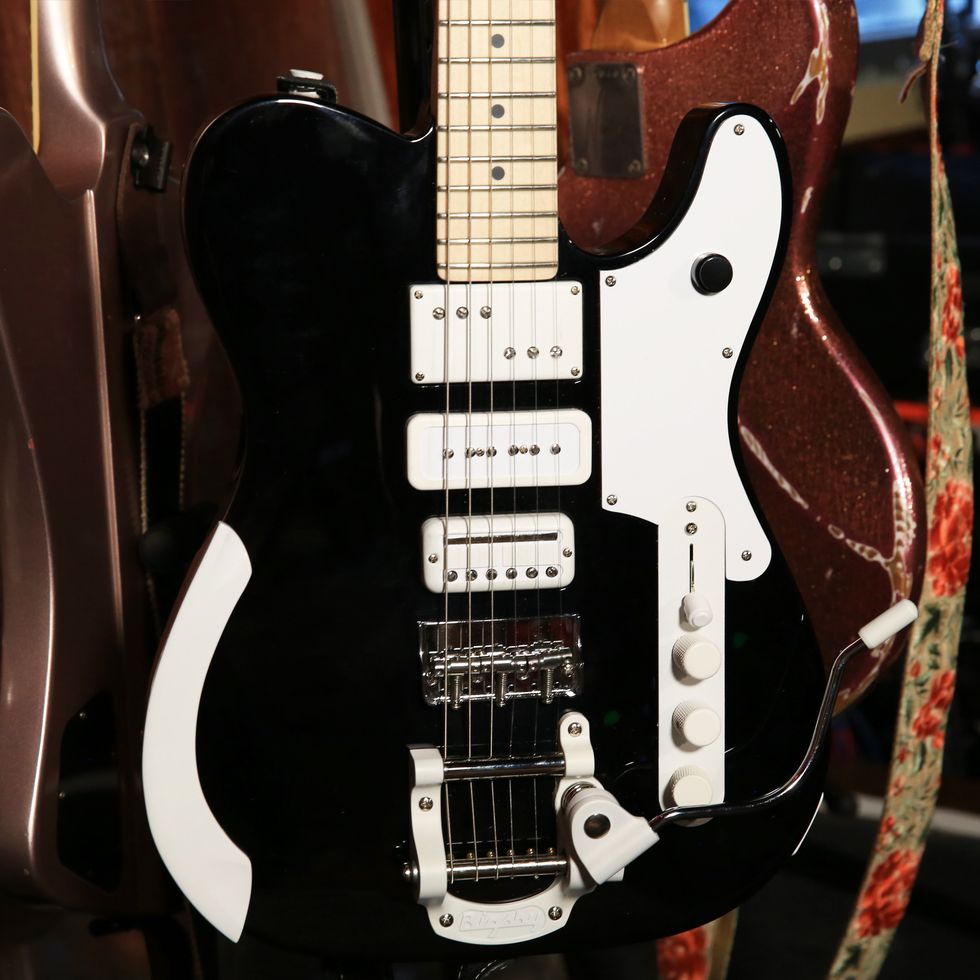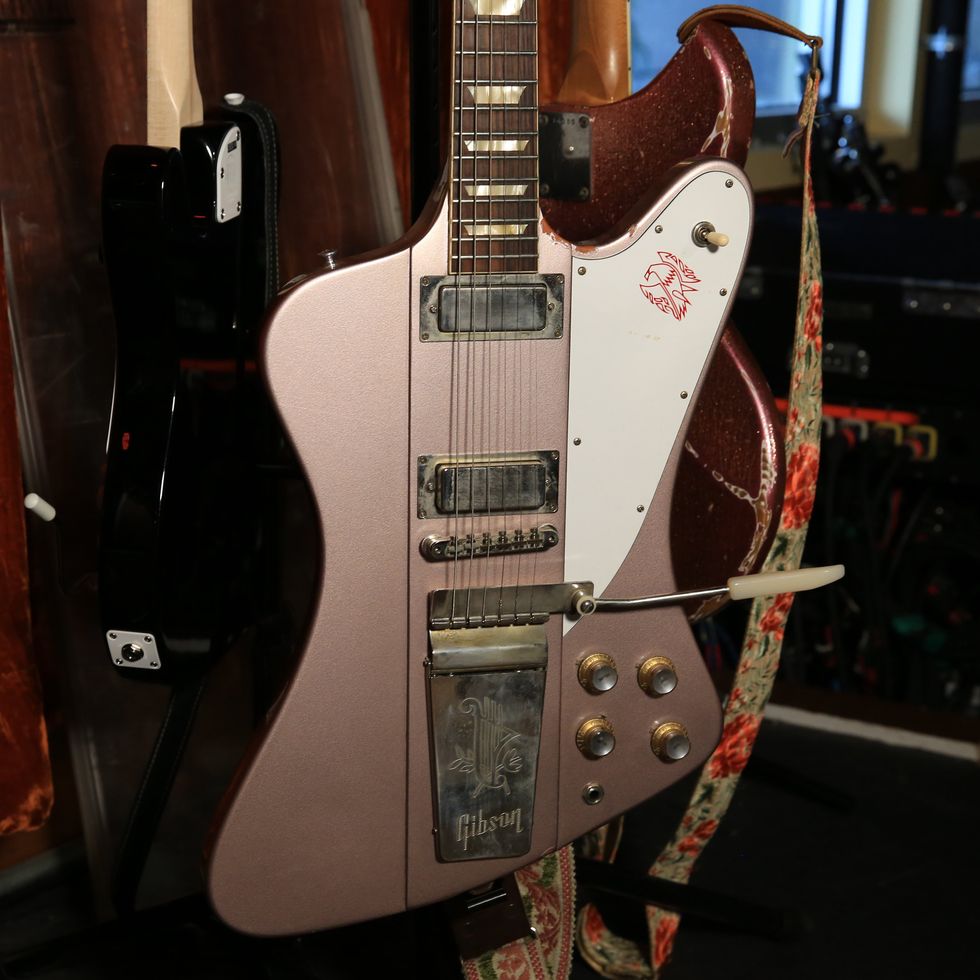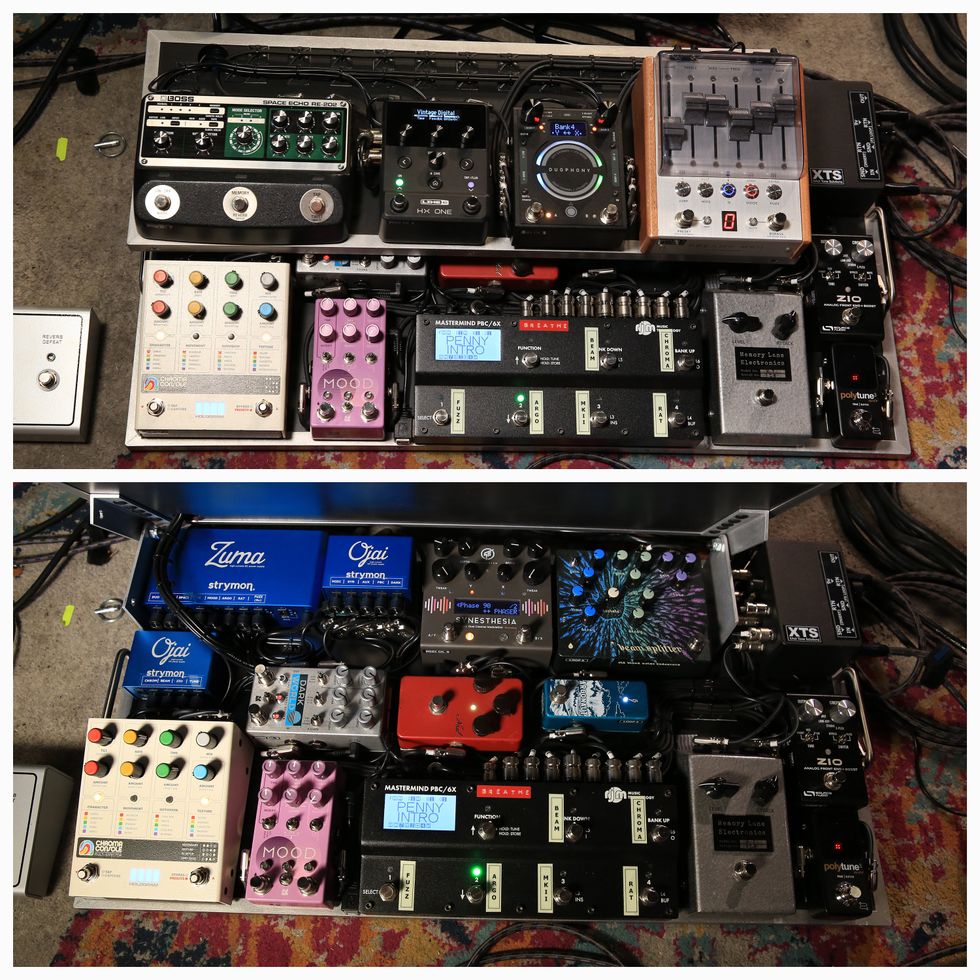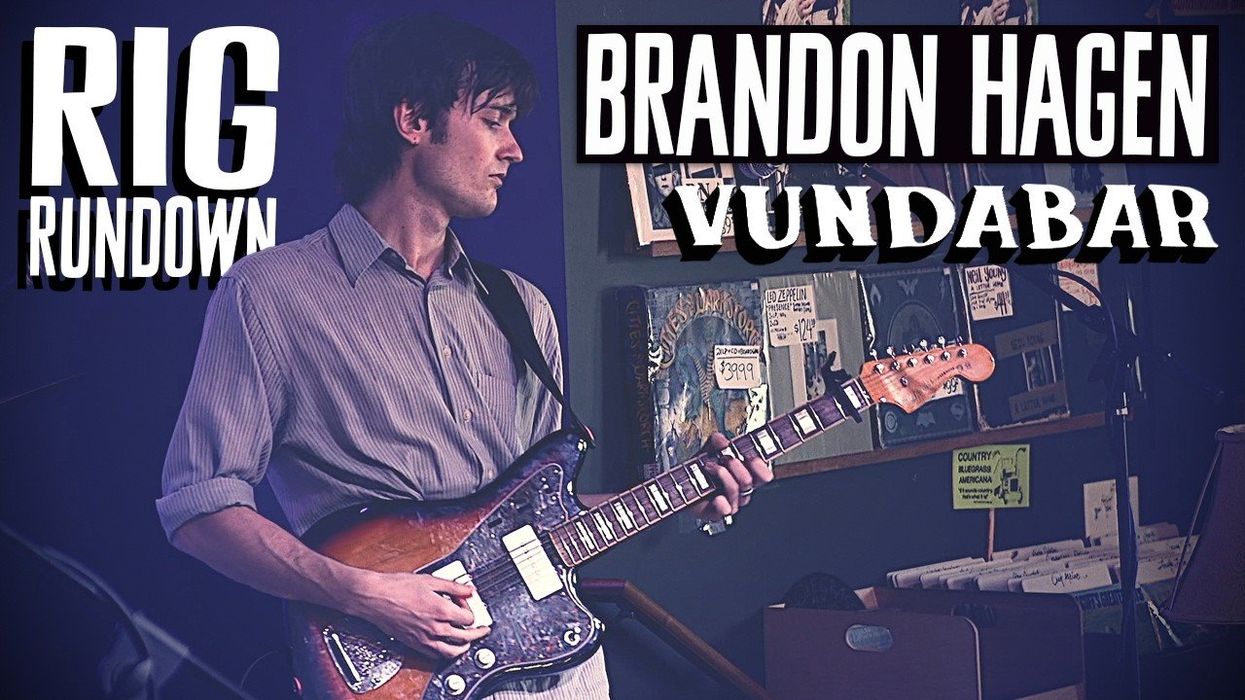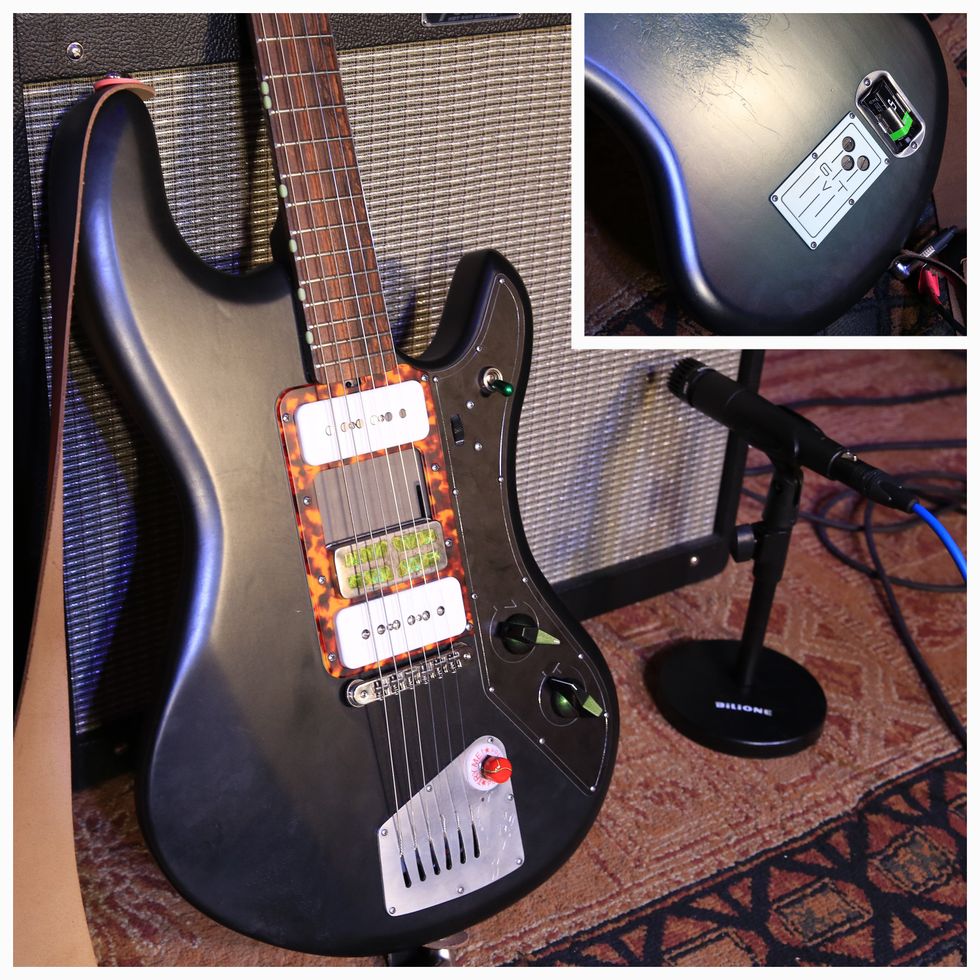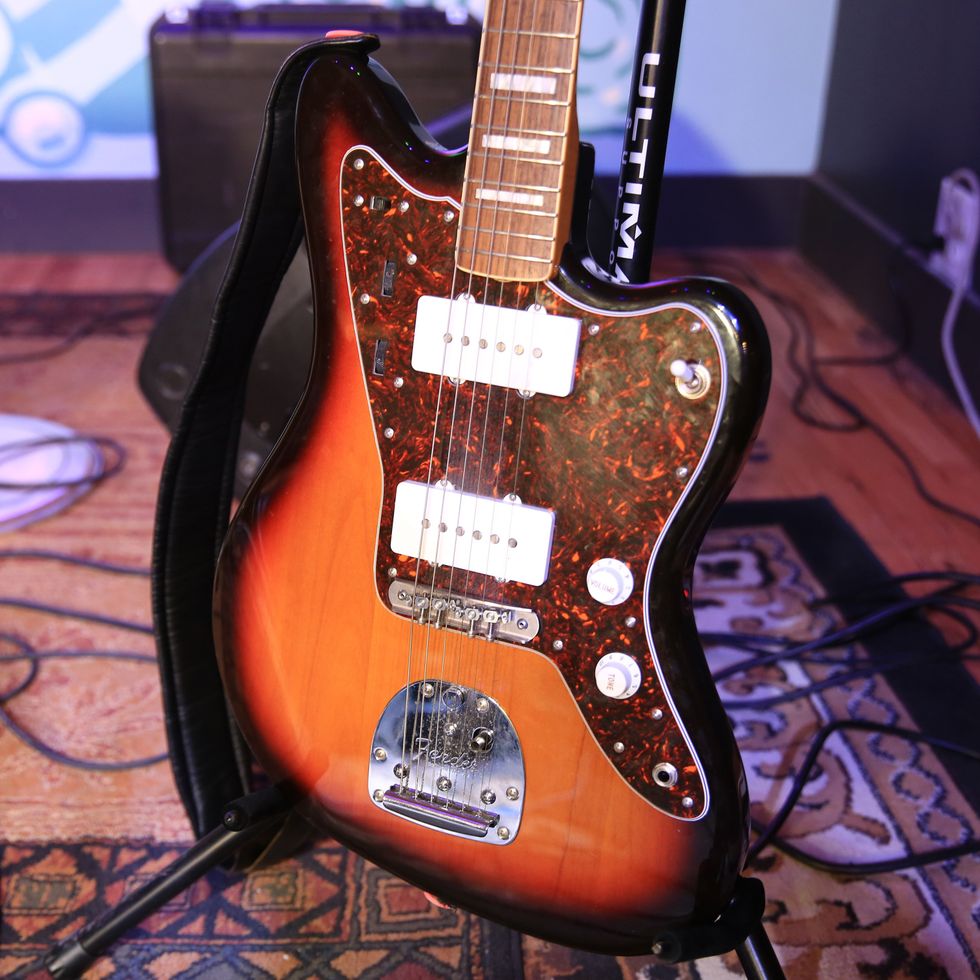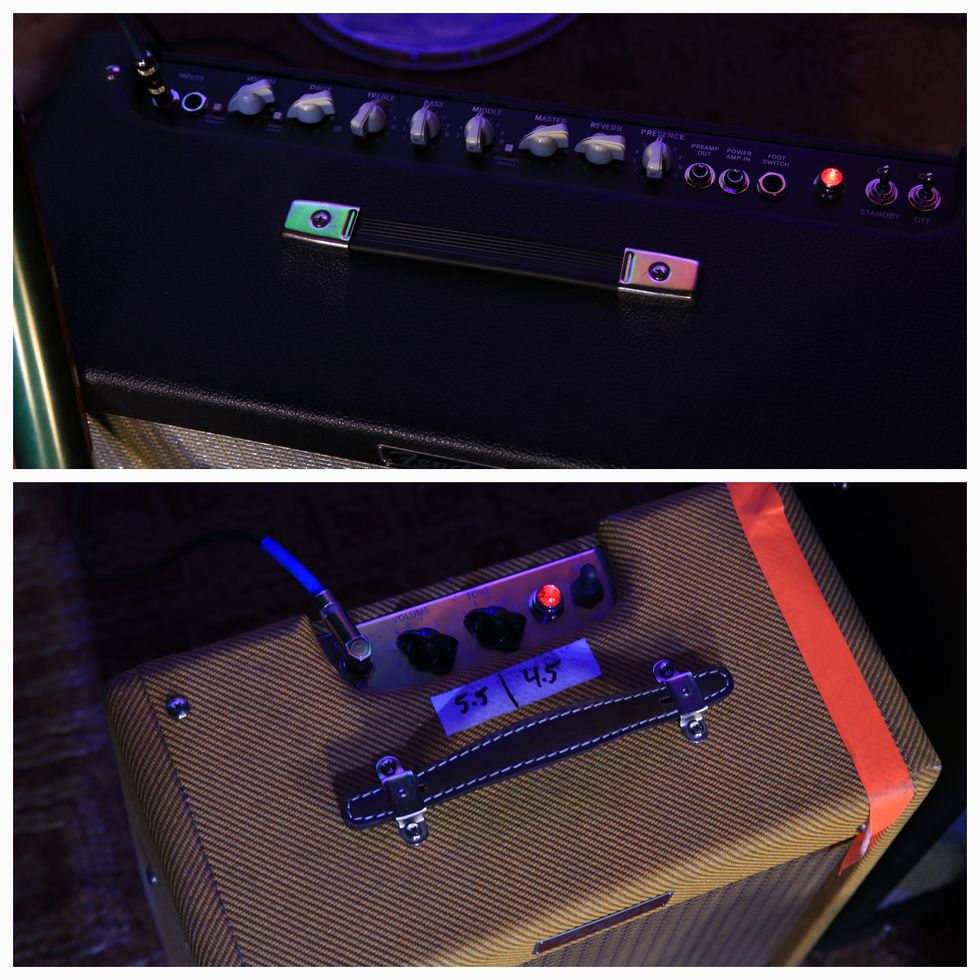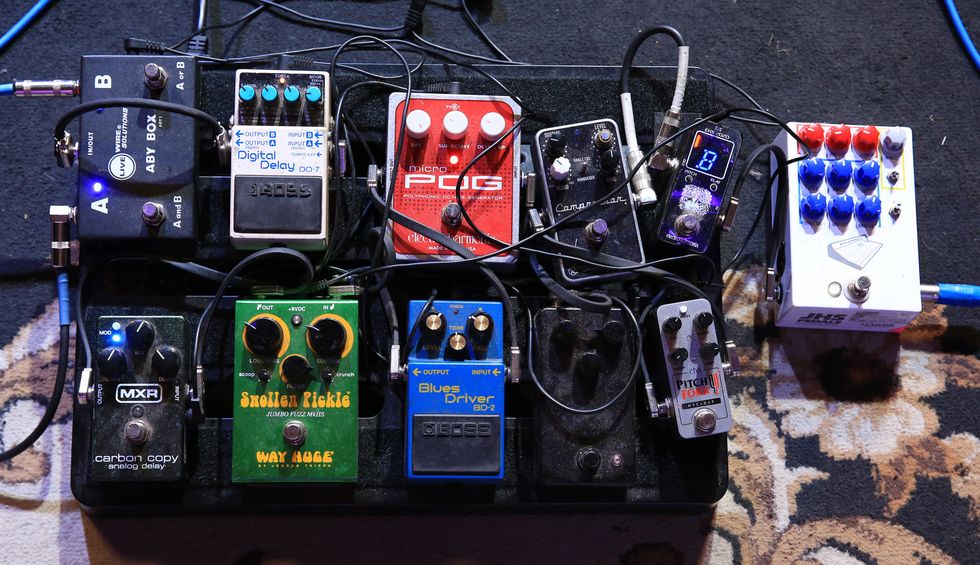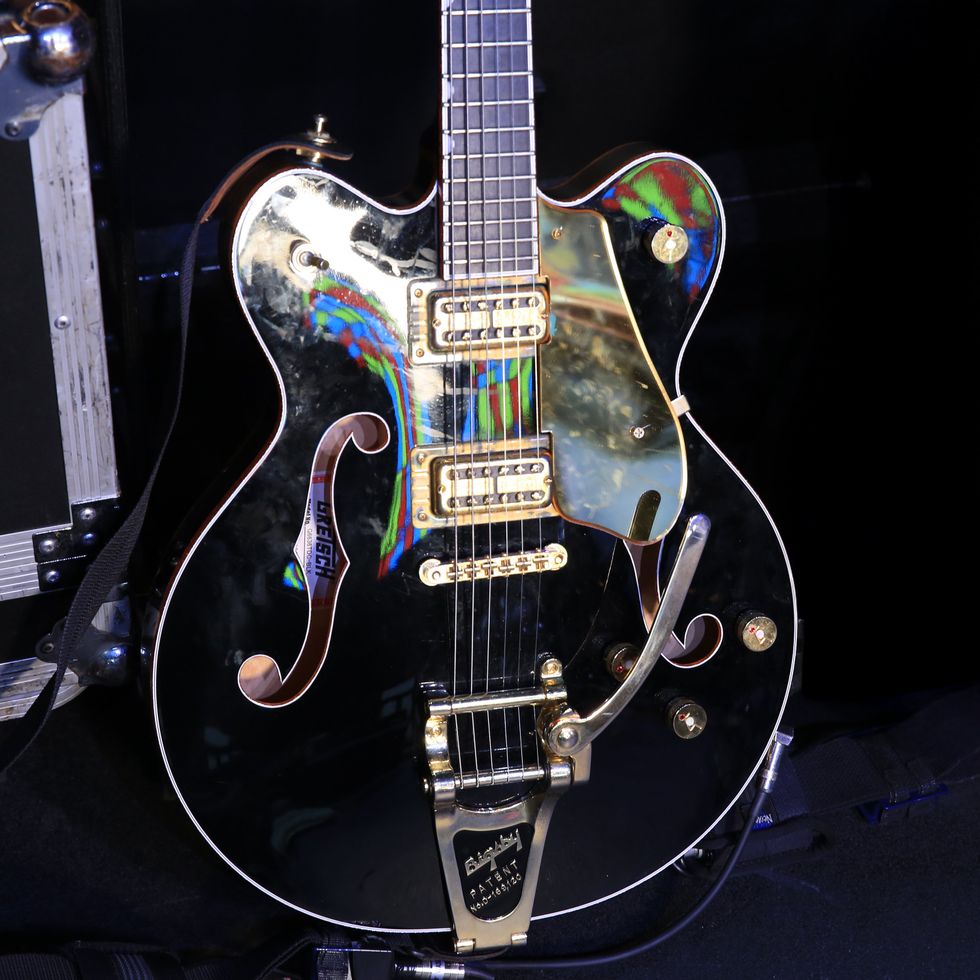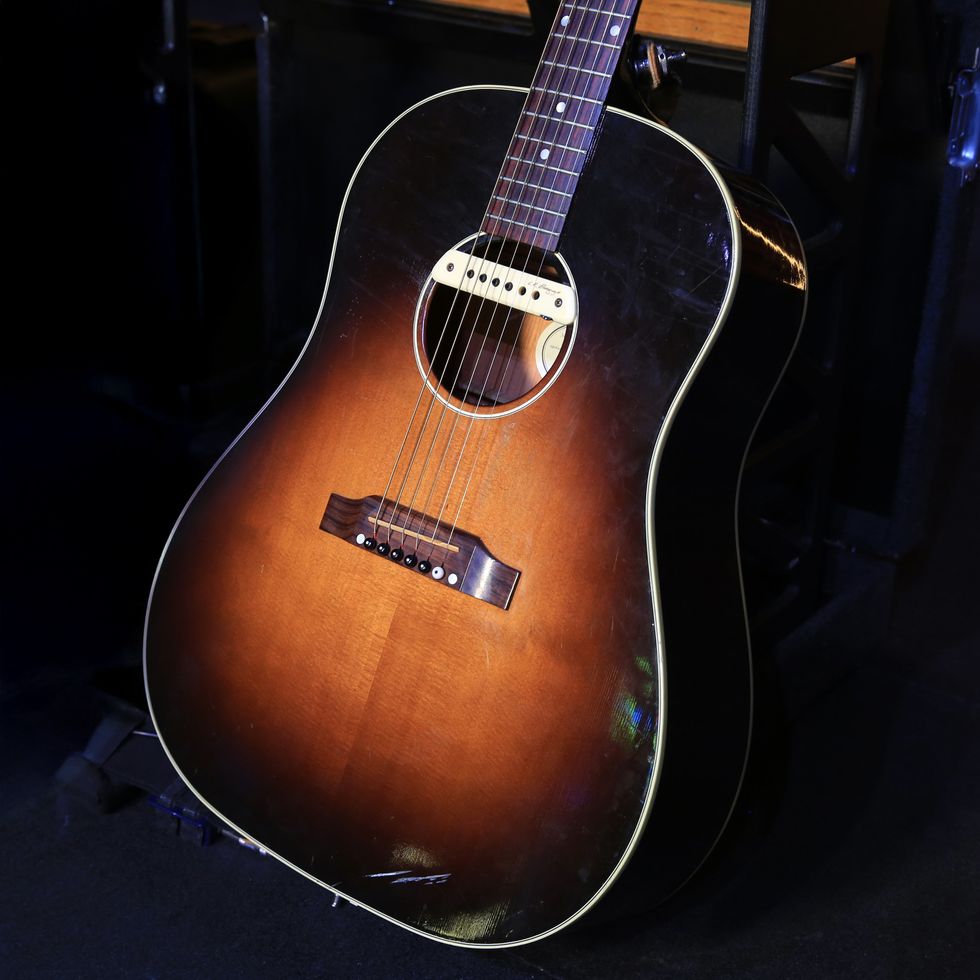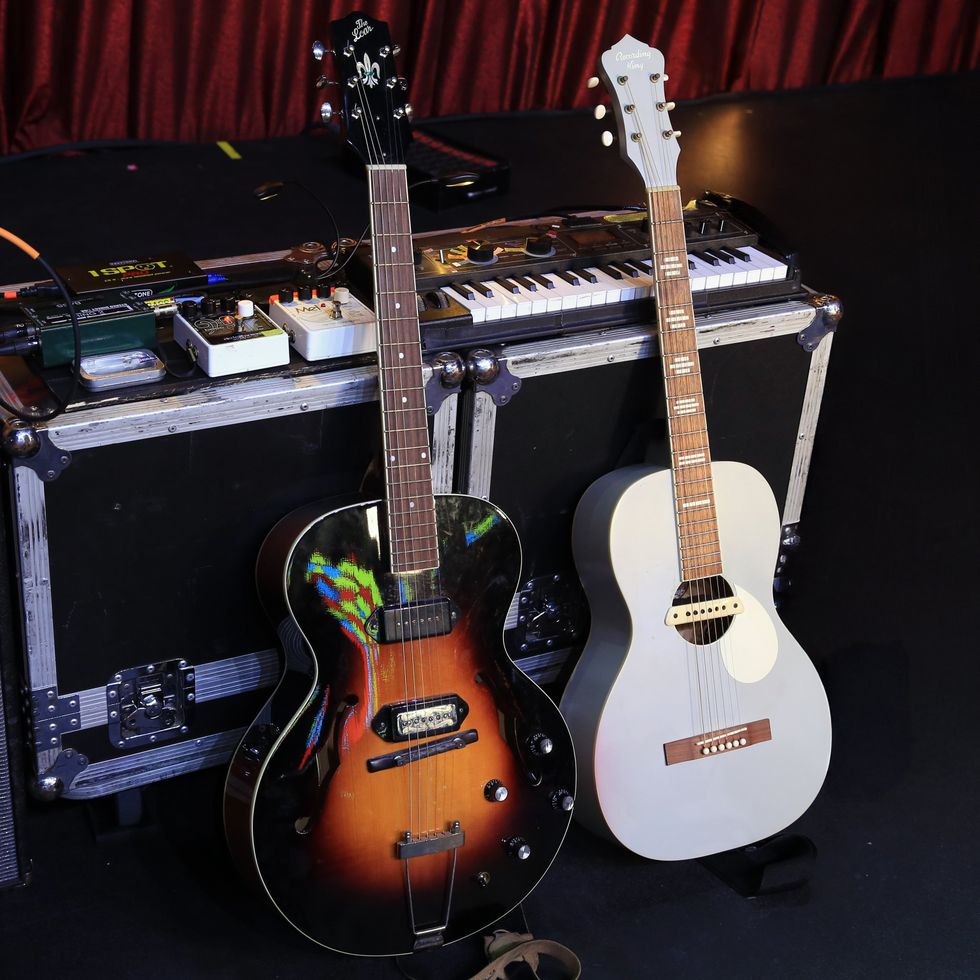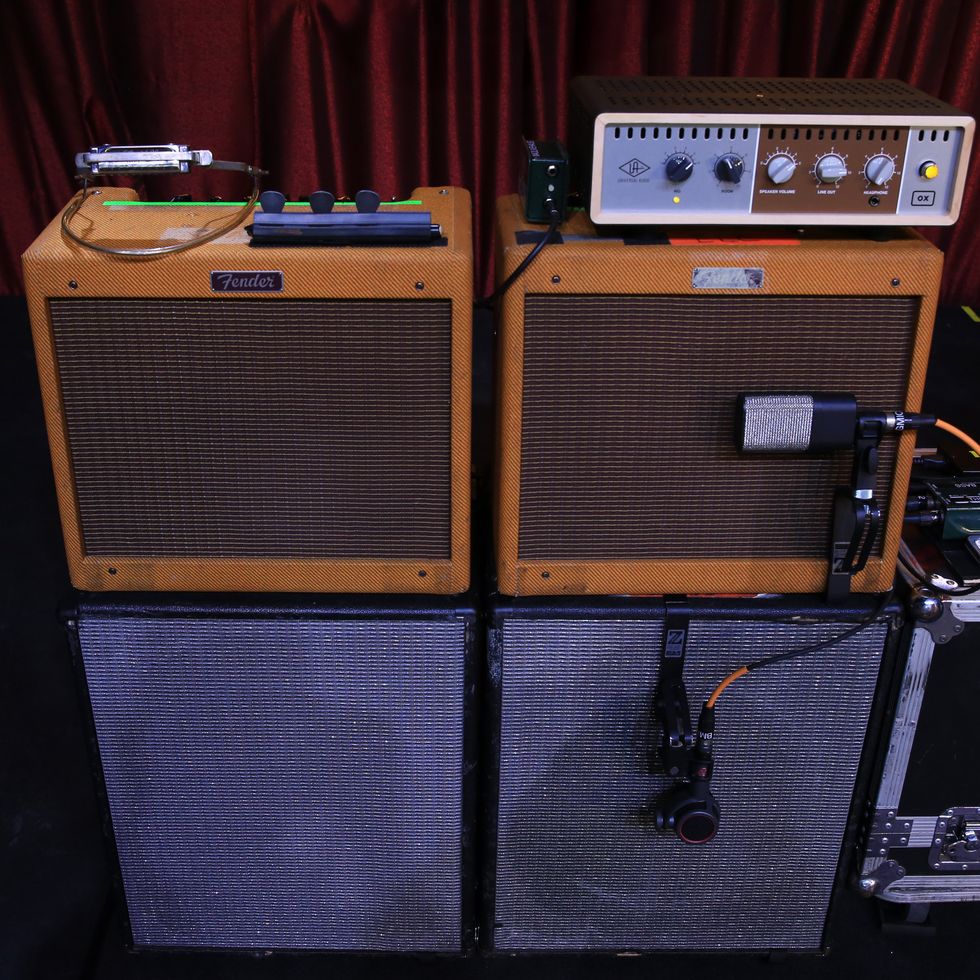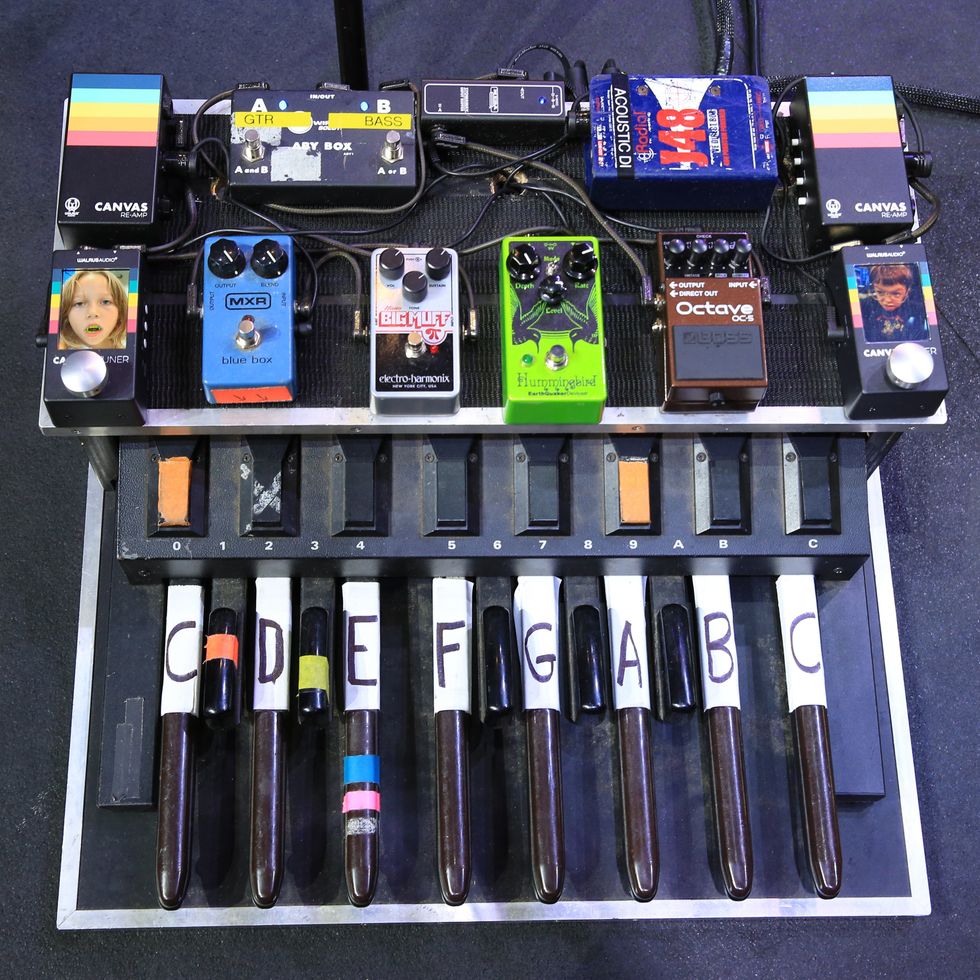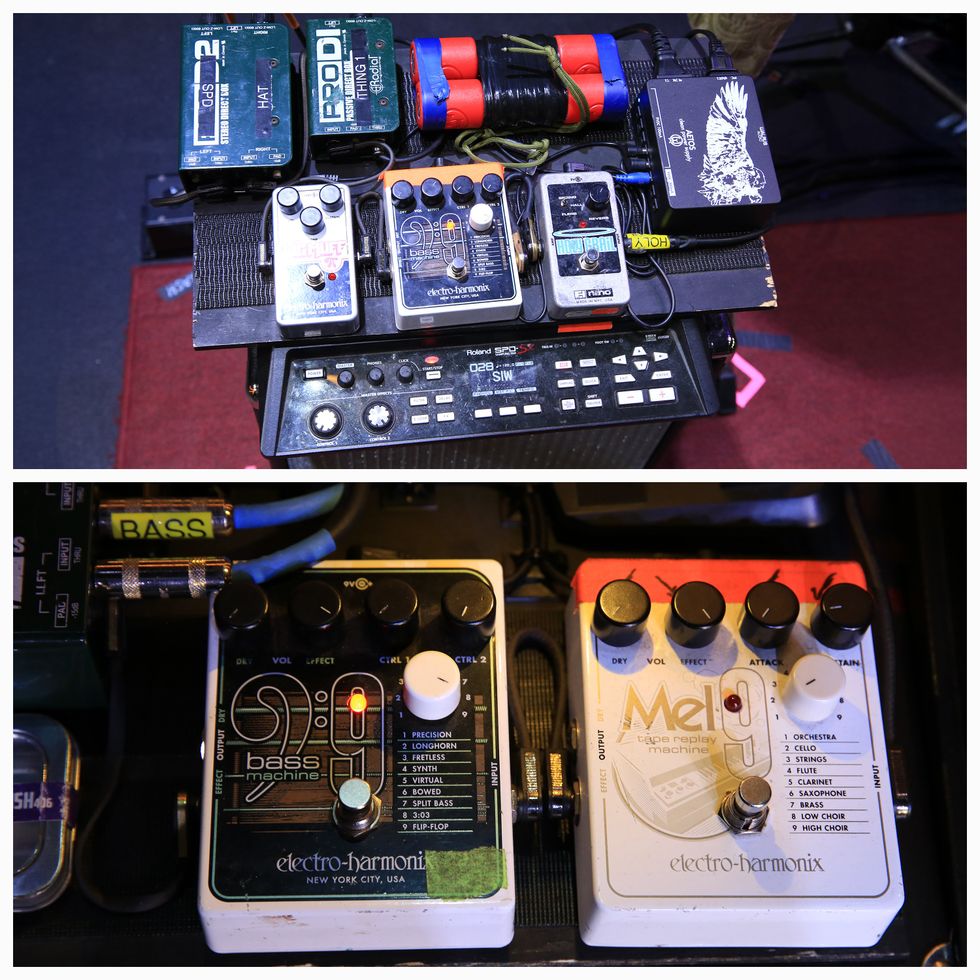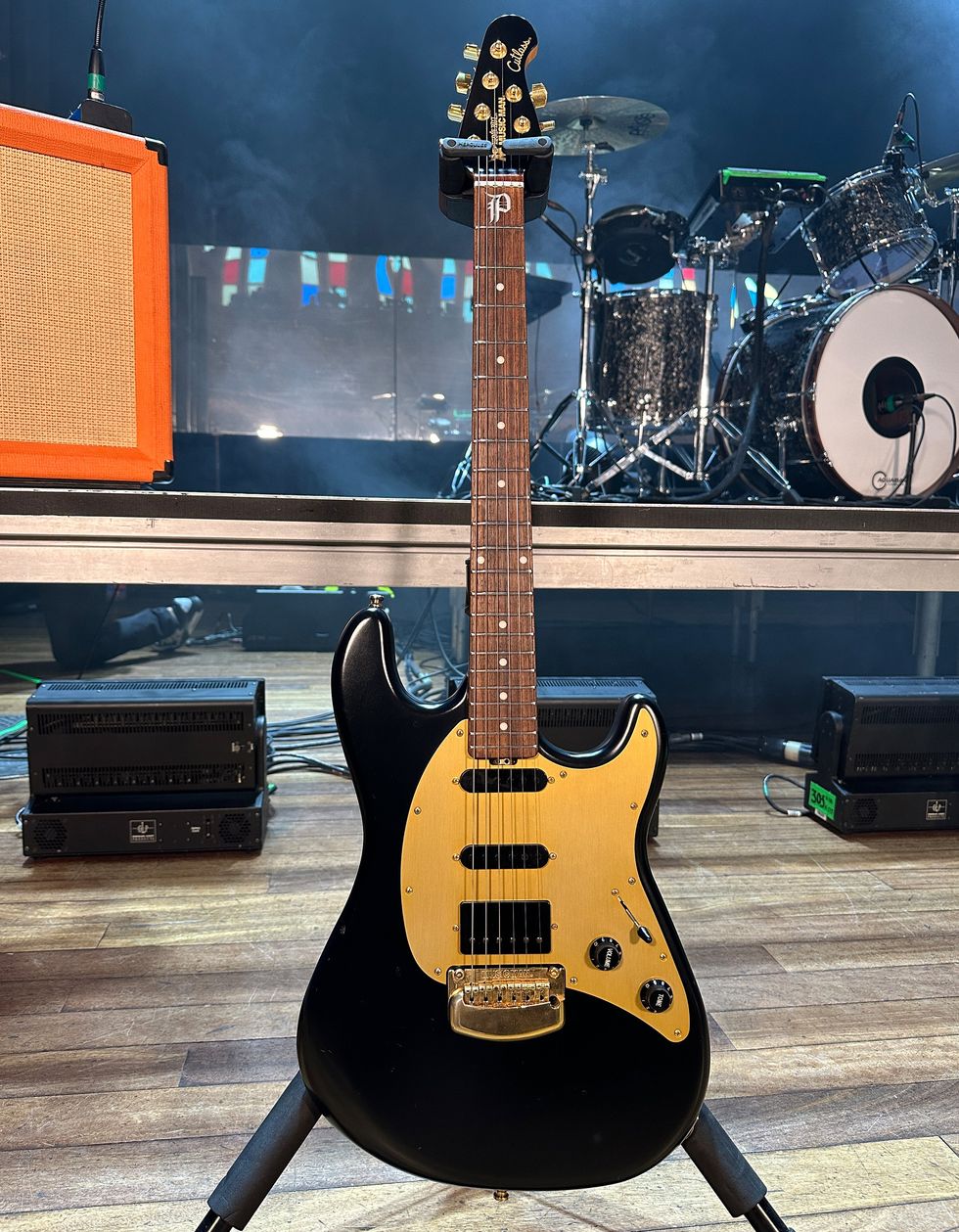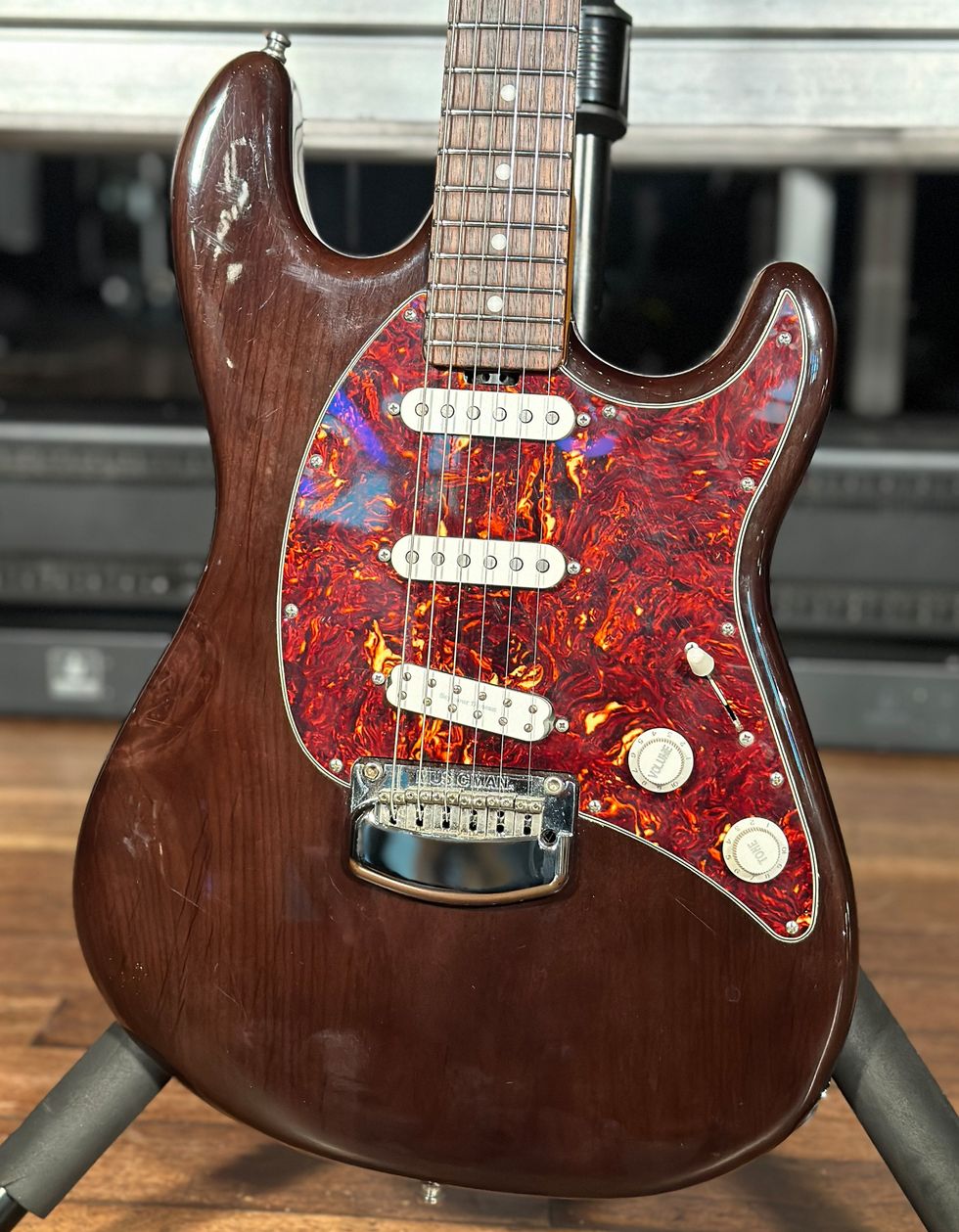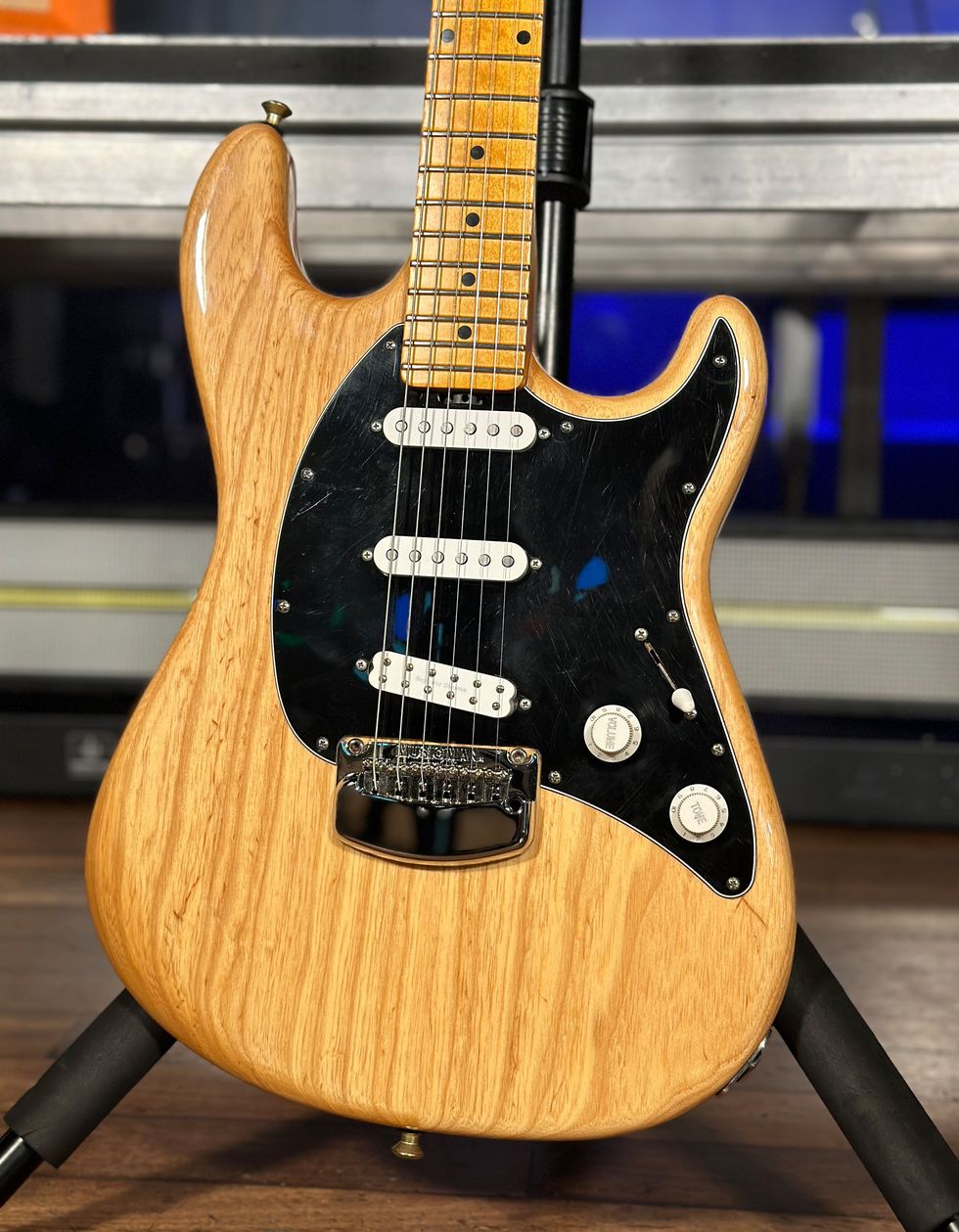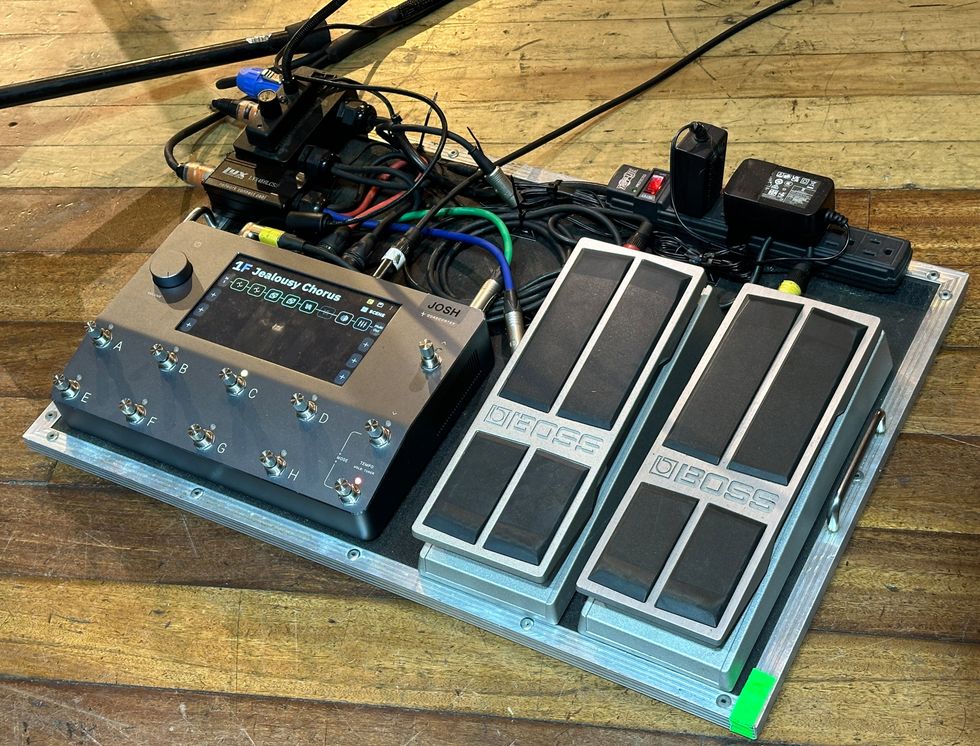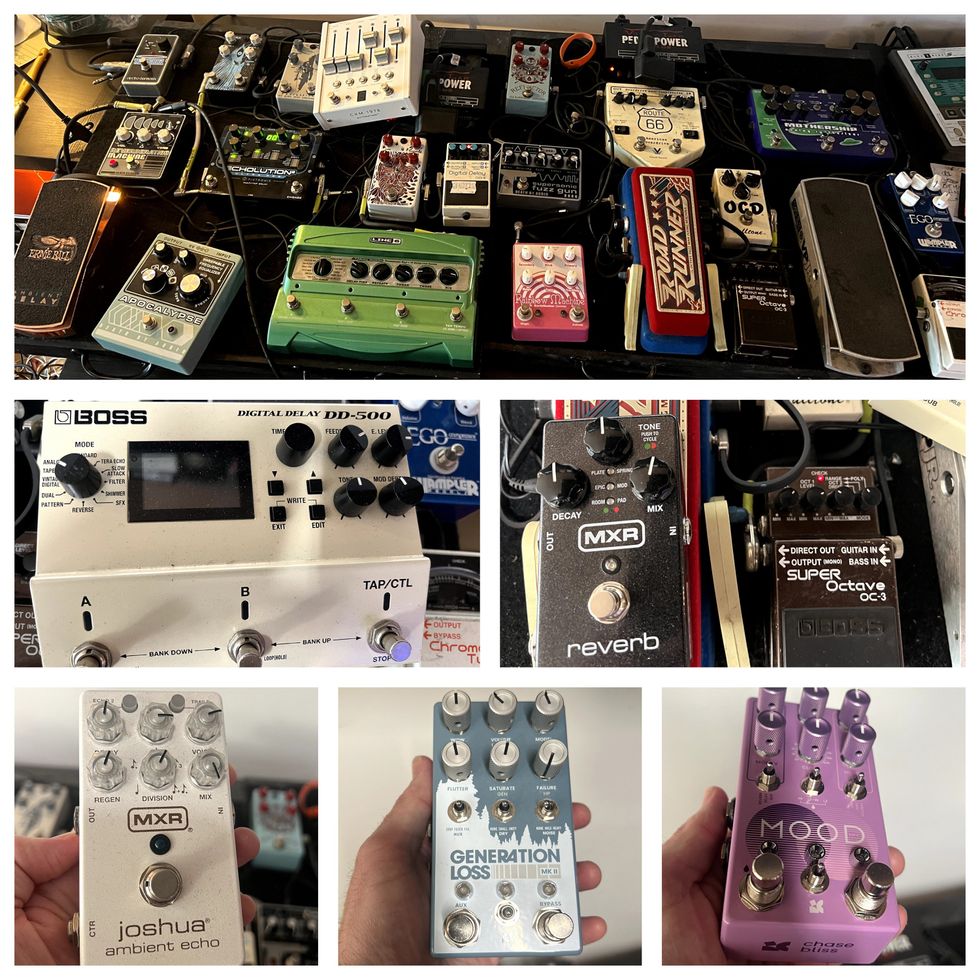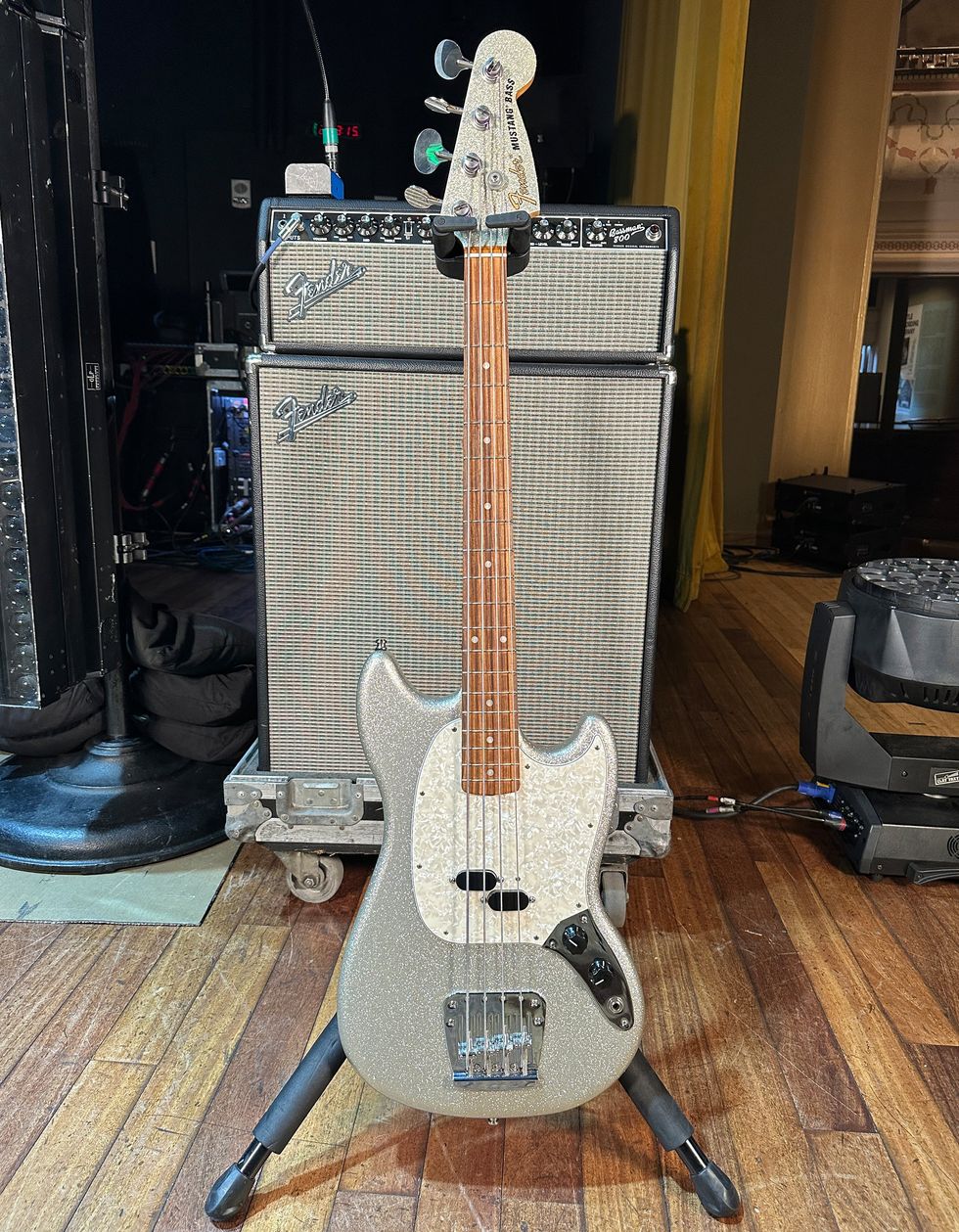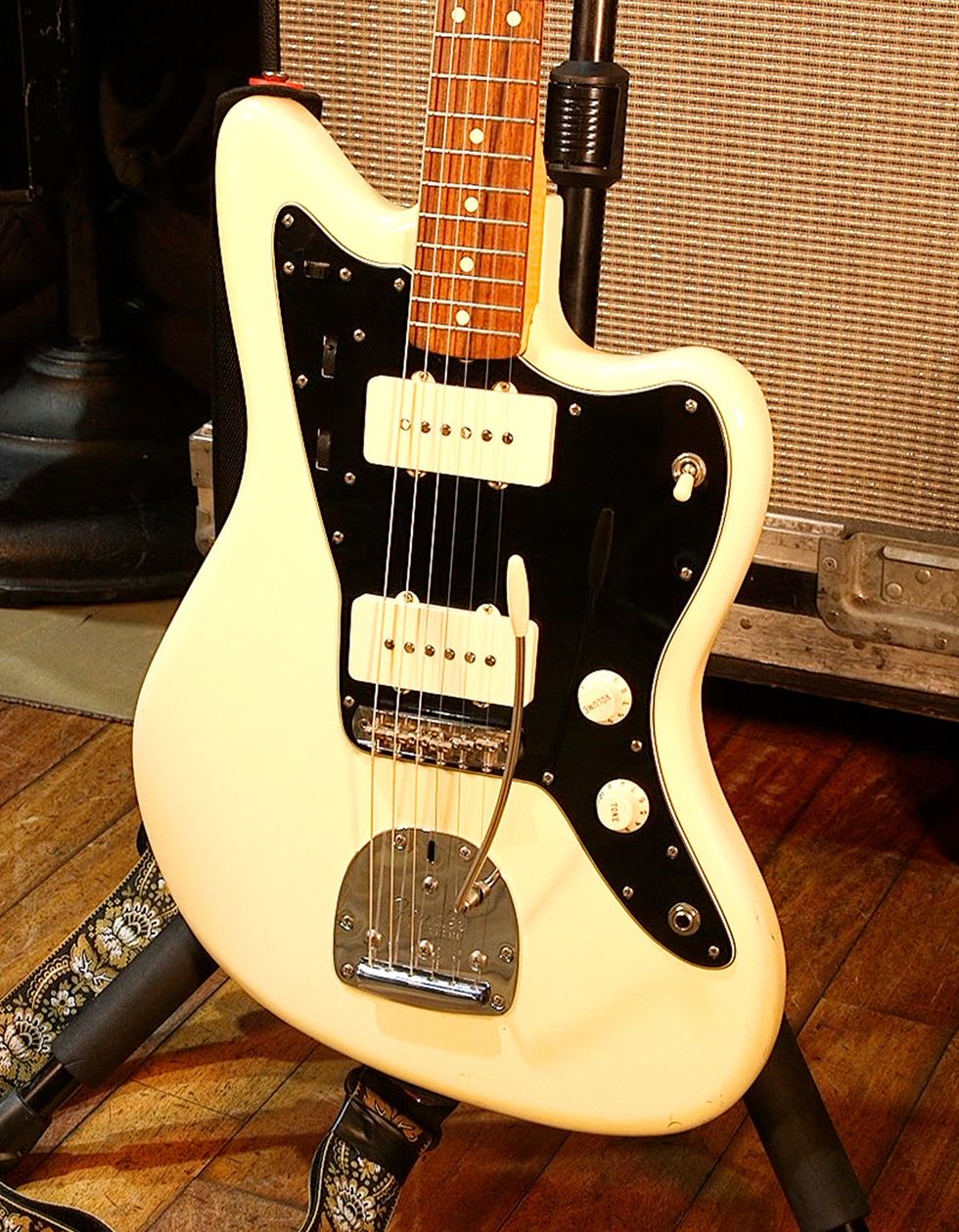Efficient, economical, and exacting are the key features that allow these pop-rockers’ finely-tuned setups to pump out buoyant ballads and bangers.
“‘Stumbled into guitar’ is a good way of putting our start with the instrument. [Spencer Stewart] and I formed the band in 2015 and that’s when I got my first electric guitar,” admits The Band CAMINO’s vocalist and guitarist Jeffery Jordan.
That sort of sideways T-bone collision into guitardom allows this pop-minded duo to avoid typical tonal tropes like worrying about tubes versus modeling, or imports versus custom. Their focus was and continues to be translating their danceable melodies into guitar-driven rompers and producing the best live show possible.
“We definitely enjoyed a pedalboard-and-amp-era of the band, but the tech has come so far and we’re able to eliminate so much room for error and potential inconsistencies, allowing for a freer performance,” adds Jordan.
As we quickly found out in our Rundown with Jordan and Stewart, the band’s approach favors execution over exhibitionism.
In mid-September, just before the band commenced their headlining Screaming in the Dark tour, in support of the just-released The Dark album, co-frontmen and dueling guitarists Jeffery Jordan and Spencer Stewart invited PG’s Chris Kies to rehearsal for a gear talk. The main chauffeurs of CAMINO explained how grabbing guitar later in life allowed them to avoid a lot of gear gossip and find tonal solutions that enrich their performances. Plus, they both discuss the stable of studs from Fender, Gibson, and Epiphone that give bounce and beauty to their merging of indie-rock and electropop.Brought to you by D'Addario XPND.
A Flashy Fender
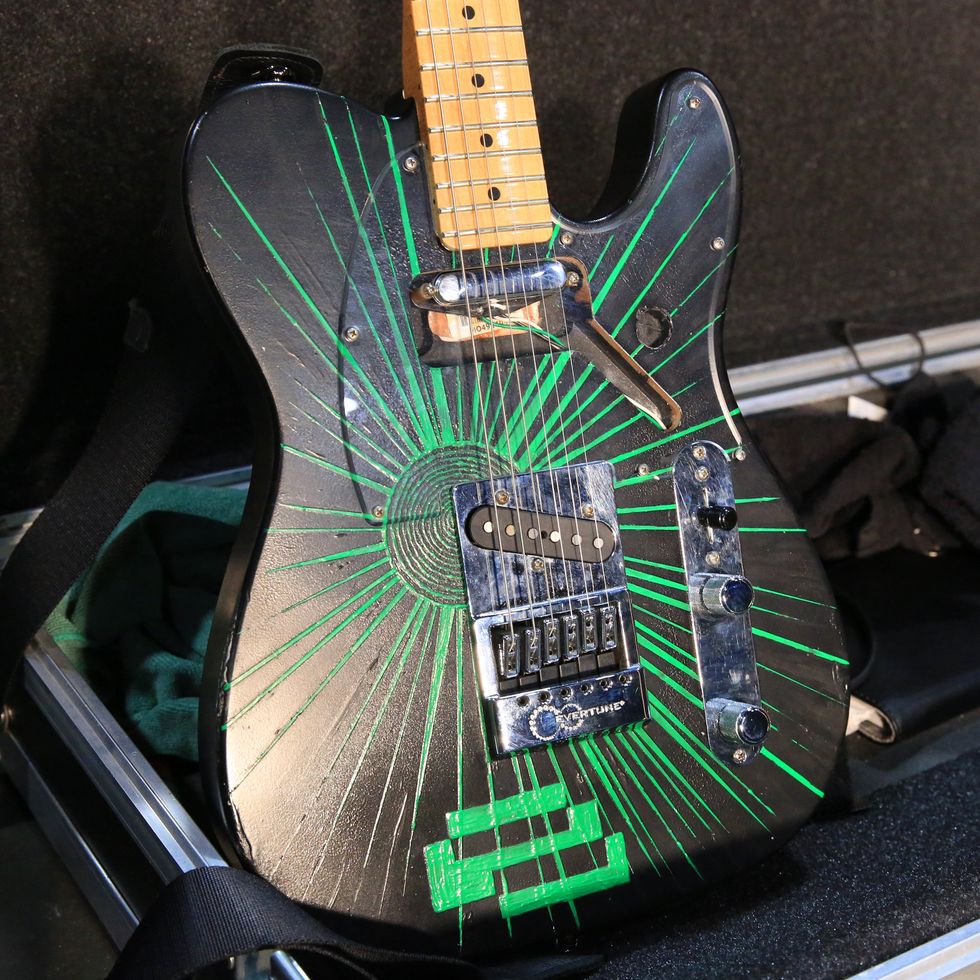
Jeffery Jordan’s first electric was a Strat. He’s long enjoyed the Fender side of things, and one of his main rides for the upcoming tour would be this MIM Fender Telecaster. Two things to note on this T would be its glow-in-the-dark paint job and the addition of the EverTune bridge, making this not only an onstage stunner but a locked-damn hammer always ready to smash. Both Jordan and Stewart exclusively use D’Addario NYXL1052 Light Top/Heavy Bottom strings (.010–.052) on their electrics. They’re normally in standard tuning, but they do explore open-D for a few songs.
Backup Blaster
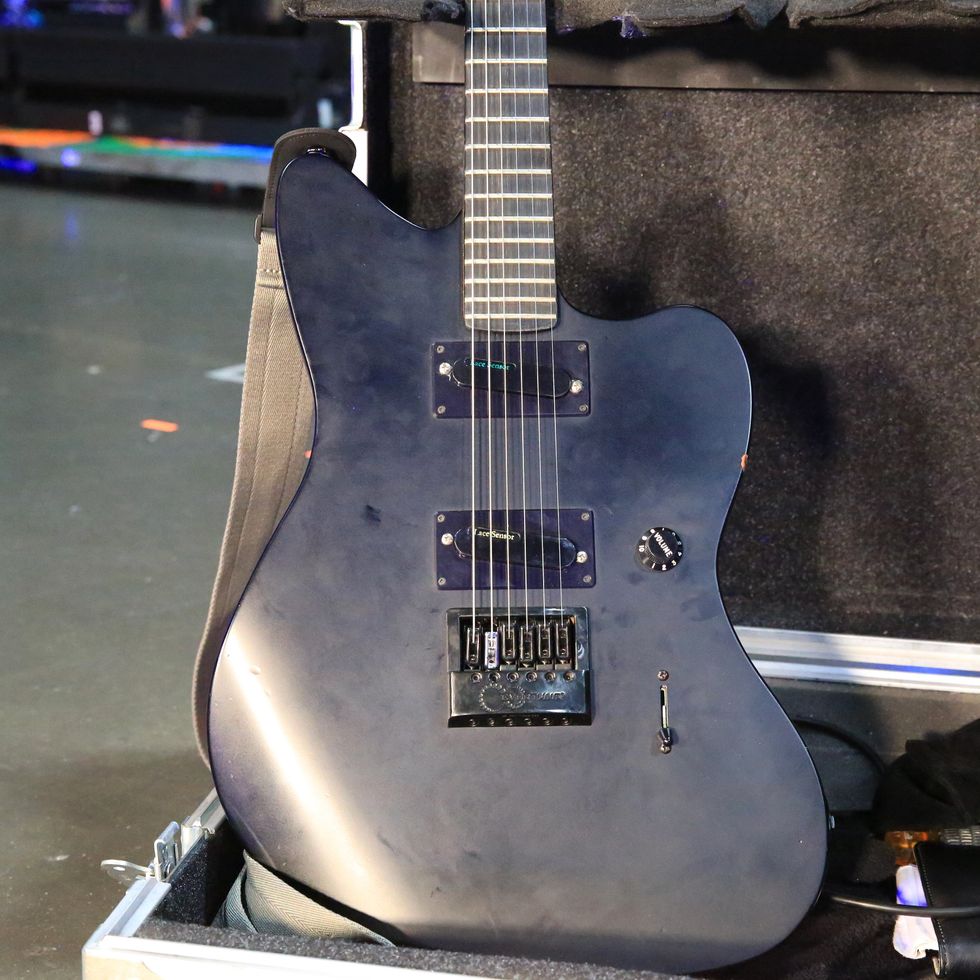
This Fender Jim Root Jazzmaster joins the party if the Tele can’t dance. It comes stock with a set of EMG 60/81 pickups, but Jordan swapped in a couple of Lace Sensors. The bridge is the gold version that offers a classic ’50s Style single-coil sound while the neck Lace is a silver model giving Jordan a fat, ’70s single-coil sound with increased output and more midrange. Again, an EverTune bridge has been added for tuning stability.
Bold Bird
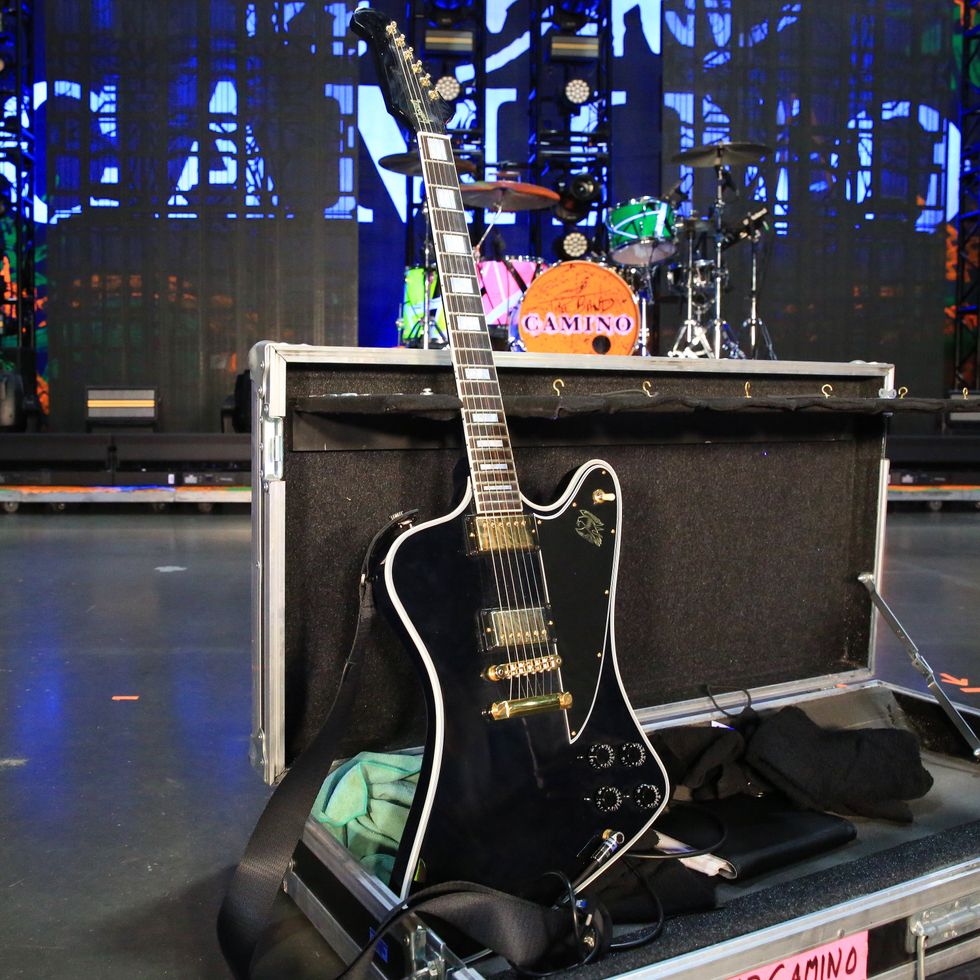
For the first time, Jordan will be hitting the road with a Gibson. Three songs are allocated to this regal raptor—a Custom Shop Firebird Custom, decked out with a mahogany body laced with multi-ply binding, elegant gold hardware, and a set of 498T/490R humbuckers.
Booming Bell
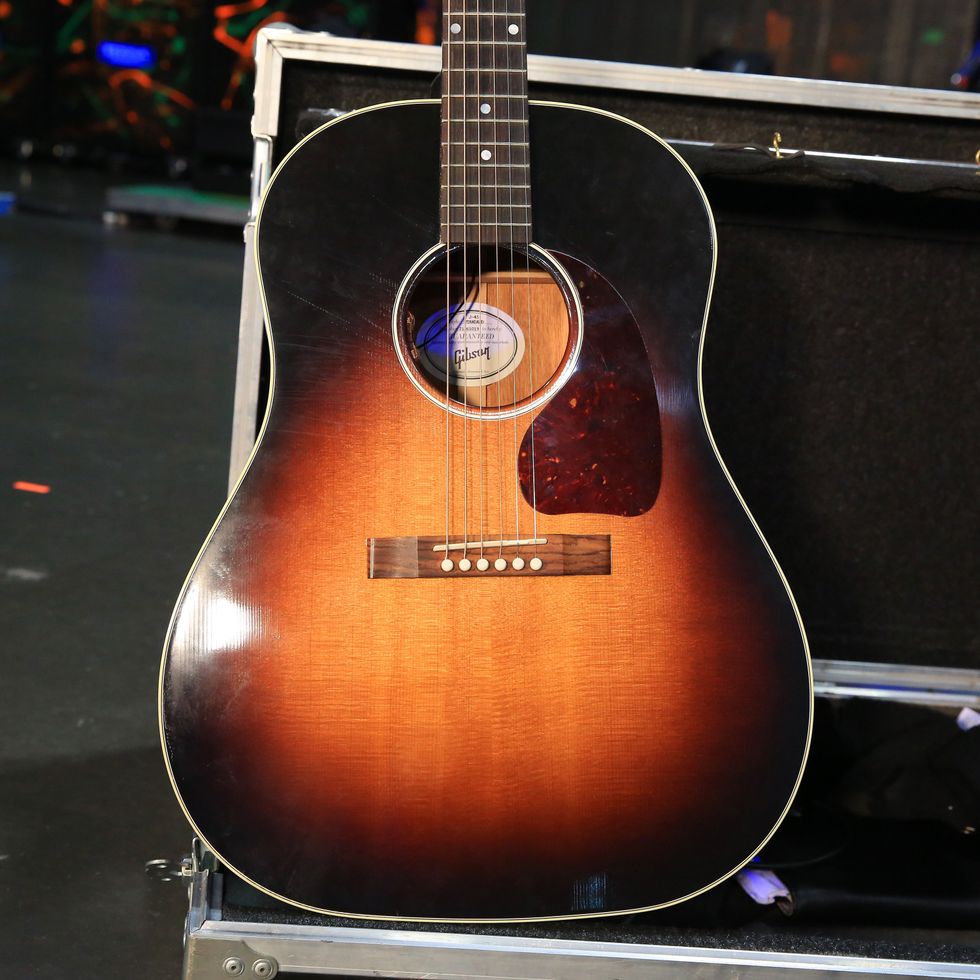
The subtler side of The Band CAMINO is handled by this Gibson J-45 Standard finished in a smoldering tobacco burst. It runs through their Neural DSP Quad Cortex thanks to the included L.R. Baggs VTC electronics.
Dancing in the Dark
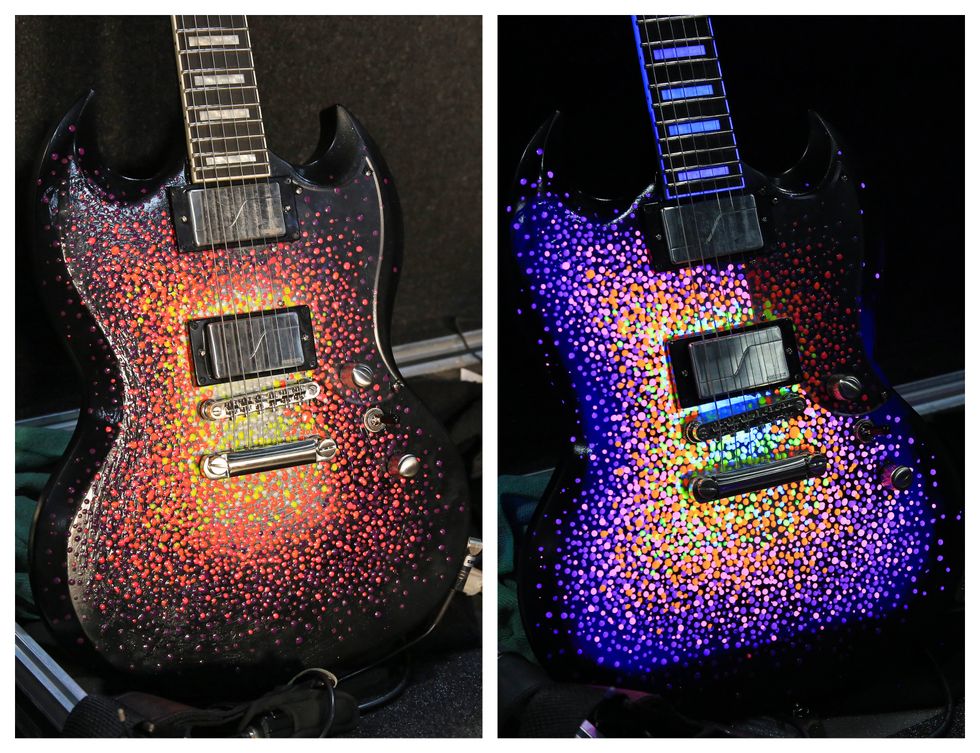
Spencer Stewart joined the electric guitar cult in 2015 when forming the Band CAMINO with Jeffery Jordan. He started the band’s existence with a Strat before being seduced by a Gibson Lzzy Hale Explorer. Ever since he’s been cruising and bruising with ’buckers, but one of his current main rides revs and roars with Fishman Fluence pickups. He prefers to record with these guitars because the Fluences are so dynamic and versatile. Originally finished in a stealth black, Stewart jazzed them up with glow-in-the-dark paint and blacklight speckles that make them both dazzle onstage. The red one takes lead, while the blue one hangs in the second position.
High Flyer
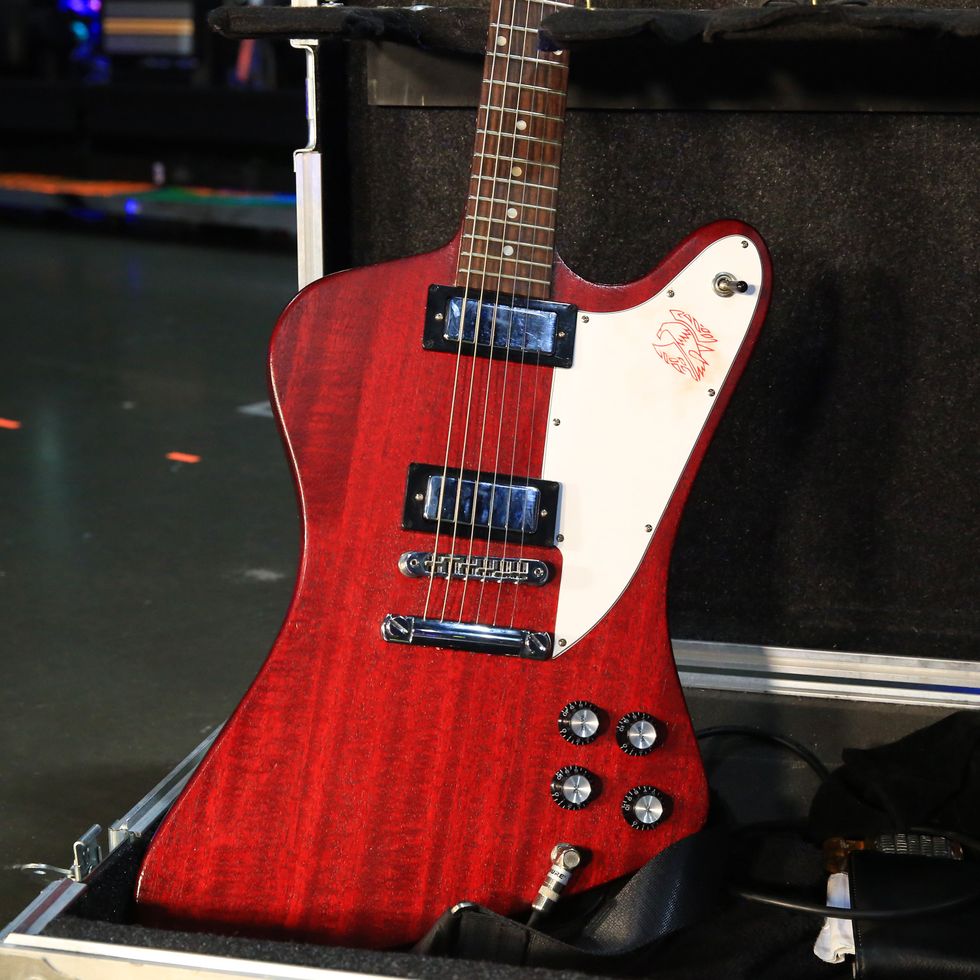
Any songs in open-D are reserved for Stewart’s Firebird Studio ’70s Tribute, still rocking its stock mini-humbuckers. He loves its tone and the added bonus of it being a light-feathered bird.
Stolen Upgrades
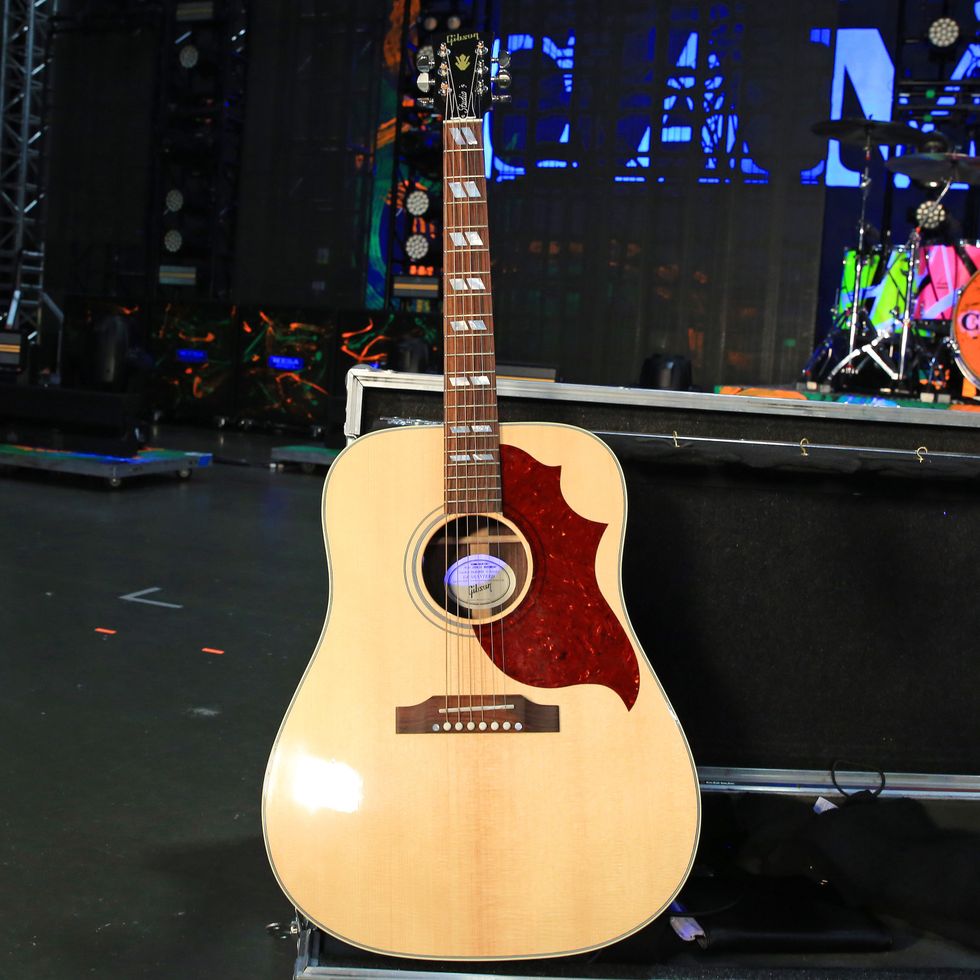
During a quick stop at a morning radio show in L.A., the band left their acoustics in the rental vehicle. When they returned from the brief session, the unattended acoustics were gone. Stewart lost an Epiphone Masterbilt and Jordan was out a Fender flattop. Before an in-store performance and album signing at Nashville’s beloved Grimey’s, Gibson offered Stewart a chance to check out this Gibson Hummingbird Studio Rosewood. Needless to say, he’s not giving it back nor letting it out of his sight.
The Same But Not
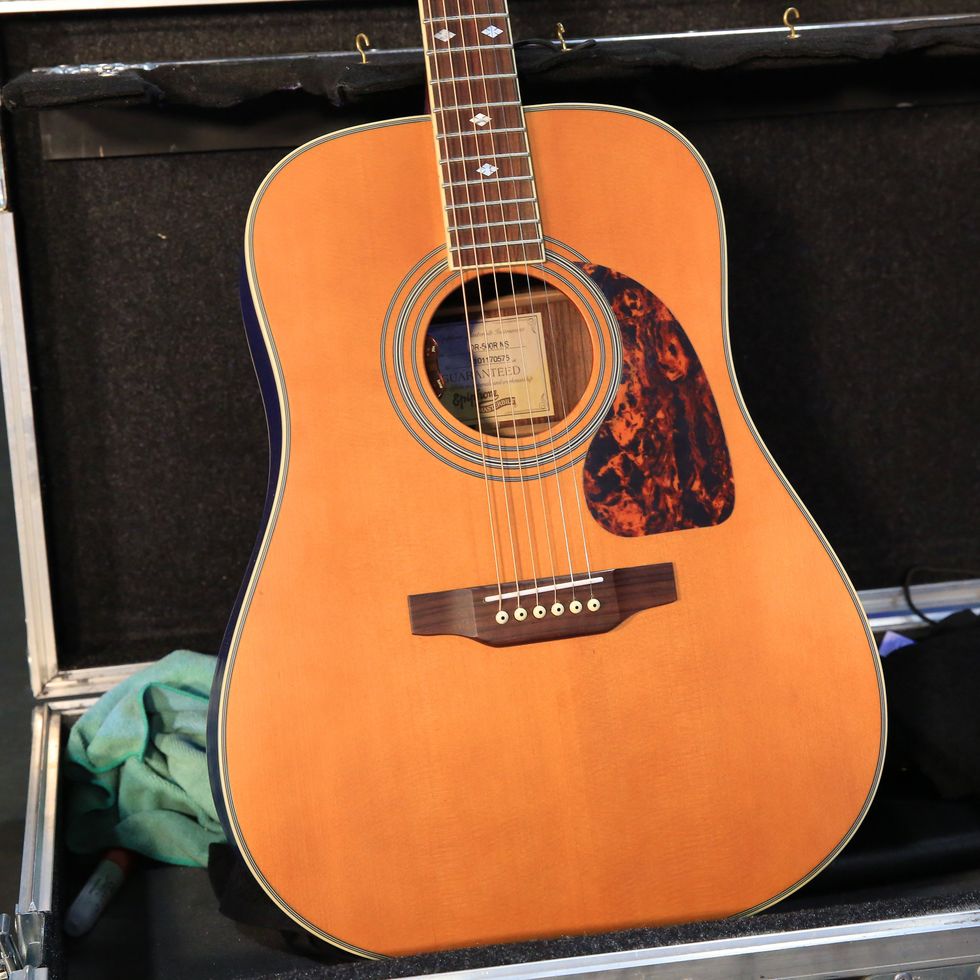
A recent venture into a Nashville Guitar Center yielded a déjà vu moment when Stewart saw this Epiphone Masterbuilt DR-500RNS—very similar to the aforementioned looted acoustic. He took it as a sign, and plunked down the plastic to be reconnected with an old friend.
Clean Business
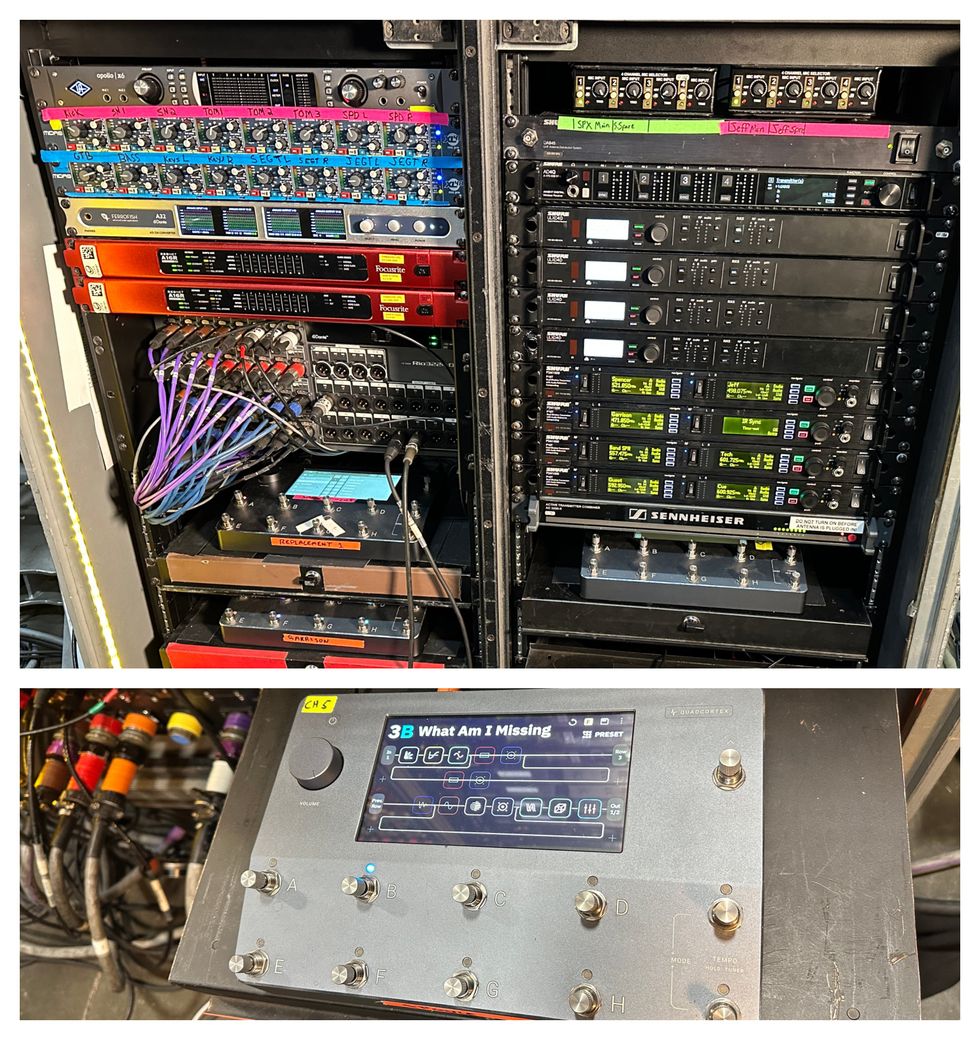
With less than 10 years under their belt as electric guitarists and growing up with tech, Jeffery and Spencer don’t have a lot of the mental pitfalls more veteran players fall into when thinking about live guitar tones. For these two, it’s all about the precision, practicality, and polished sounds they can achieve for a maximum performance that connects directly with the audience. The one-stop solution for those needs is this rolling buffet that starts with Neural DSP Quad Cortex units. Every moment of their show is programmed in these tablet-sized titans. The other hardware in their rack includes Shure PSM 1000s (in-ear monitors), Shure P10T-G10 Dual Wireless Transmitters, Shure ULXD4D Dual Channel Digital Wireless Receivers, Radial Gold Digger 4 Channel Mic Selectors, Sennheiser AC3200-II Active High Power Broadband antennas, Focusrite RedNet A16R MkII 16x16 Analog Dante Interfaces, Ferrofish A32 Pro Dante Multi-Format Converters, Midas XL48 Preamps, and Universal Audio Apollo X6 Thunderbolt Interfaces. This setup can either pilot a moon mission or make for a smooth, flawless rock show.




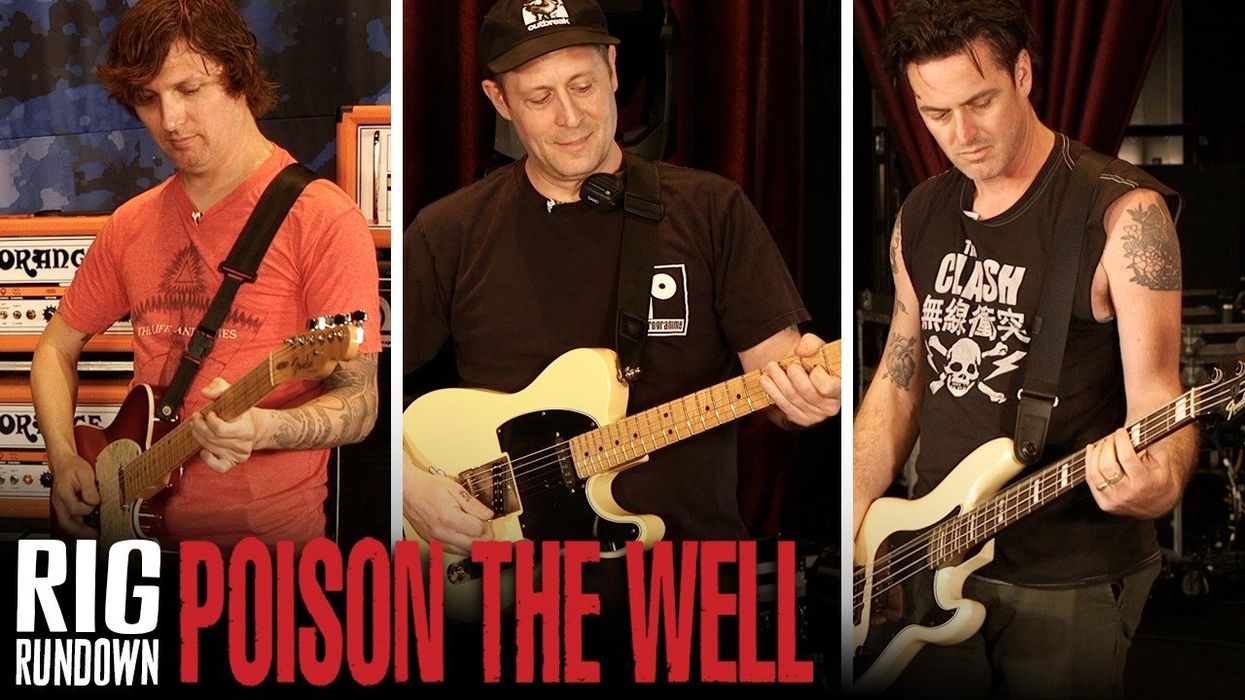
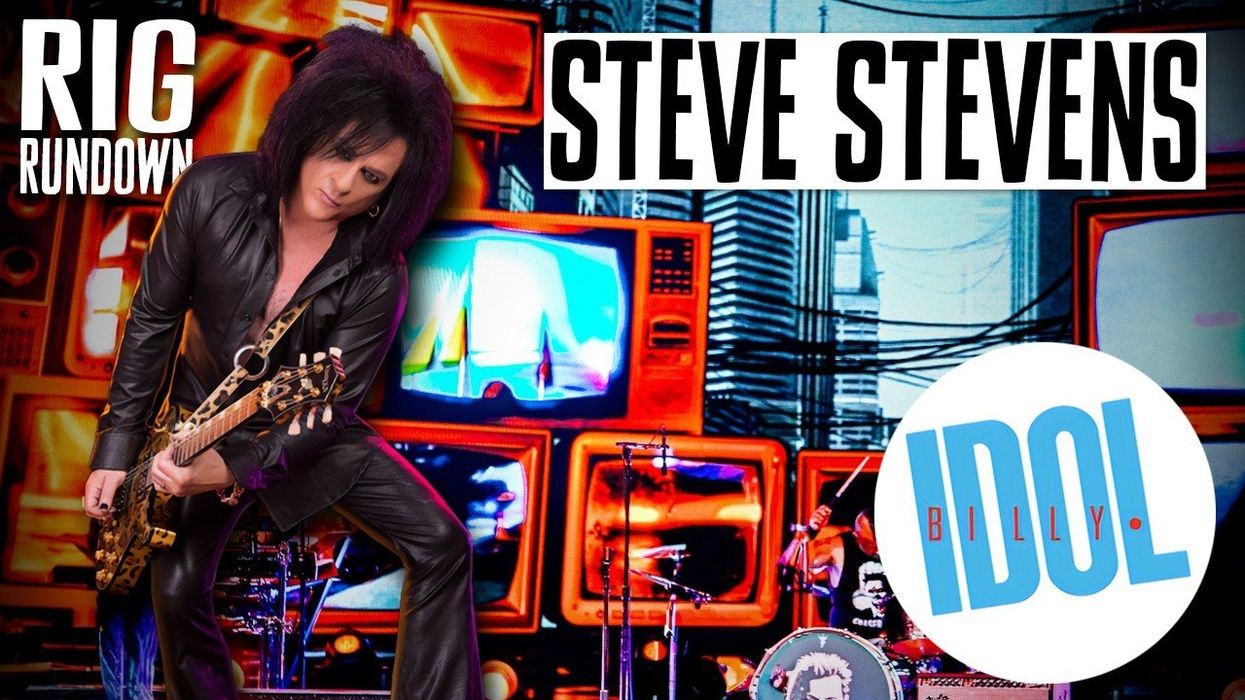
![Fontaines D.C. Rig Rundown [2025]](https://www.premierguitar.com/media-library/image.jpg?id=60290466&width=1245&height=700&quality=85&coordinates=0%2C0%2C0%2C0)
